El Polar Vantage V es, probablemente, el reloj más esperado de 2018. Casi 5 años después de la presentación de su último reloj de triatlón, el Polar V800, la marca finlandesa por fin ha creado un digno sucesor. Y lo hace con dos modelos, añadiendo el Polar Vantage M a una familia que no esperábamos tan completa.
Los dos suponen un cambio importante para Polar en muchos aspectos. Abandonamos las cajas cuadradas para pasar a un diseño de pantalla circular; nuevo sensor de pulso óptico que, según Polar, es el más avanzado hasta la fecha; nuevo chip GPS, pantalla a color… y por supuesto no hay que olvidar que han sido los primeros en incluir la potencia en carrera directamente en el reloj sin necesitar ningún otro accesorio externo.
La apuesta de Polar es notable, así lo atestiguan los años de desarrollo detrás de estos dos relojes. Eso sí, aún hay algunas funciones que tienen que llegar y que se echan bastante de menos en los Vantage (porque sí estaban presentes en los modelos anteriores de la marca), como la navegación de rutas, las notificaciones de móvil o el bloqueo de zonas.
Llevo algo más de un mes trabajando con ambos modelos de Polar, por lo que creo que ya tengo una buena idea de qué es lo que ofrecen ambos modelos. Me han acompañado durante multitud de entrenamientos ultimando la preparación para la Maratón de Málaga, por lo que hemos pasado muchas horas juntos.
Recuerda que si te gusta el contenido que te ofrezco y quieres colaborar soportando la página, puedes hacerlo comprando tu nuevo Polar Vantage (o cualquier otra cosa, como un ambientador con olor a bacon) a través de los enlaces de Amazon que facilito. De esa manera recibiré una pequeña comisión que es lo que soporta la página y las muchas horas necesarias para realizar todas estas pruebas.
También puedes suscribirte como miembro VIP. Principalmente estarás ayudando a soportar la página, pero además disfrutarás de beneficios exclusivos.
No te entretengo más. ¿Quieres saber todo lo que ofrecen los nuevos Polar Vantage? Pues coge un café y siéntate tranquilo, porque te voy a contar todo lo que necesitas saber de estos relojes y hasta ahora nadie te había contado.
Navegar a secciones específicas
- Resumen
- Novedades de la gama Polar Vantage
- Polar Vantage M vs Polar Vantage V. Diferencias
- Posibilidades de configuración
- Uso en entrenamiento y deporte
- Training Load Pro (Vantage M y Vantage V)
- Recovery Pro (exclusivo Polar Vantage V)
- Medición y entrenamiento por potencia (exclusivo Polar Vantage V)
- Pulsómetro óptico Polar Precision Prime
- GPS
- Navegación de rutas
- Notificaciones
- Calendario de actualizaciones Polar Vantage
- Comprar Polar Vantage M | Polar Vantage V
- Opinión de Polar Vantage M y Vantage V
Resumen
Funcionamiento global - 7.5
Posibilidades de entrenamiento - 7
Plataforma y aplicaciones - 9
Autonomía - 10
Acabados y comodidad - 8.5
Relación precio/prestaciones - 7.5
8.3
TOTAL
Cinco años han pasado desde el último reloj multideporte de Polar. Todos estos años han desembocado en la serie Vantage con dos modelos bastante parecidos. Ambos modernizan totalmente todo lo que Polar ofrece con nuevas métricas para controlar tu entrenamiento, un sensor de pulso óptico muy avanzado y lo último en chipset GPS para una mayor autonomía.
Lo mejor
- Gran duración de batería en ambos modelos
- El Vantage V es el primer reloj en ofrecer datos de potencia en carrera sin ningún otro accesorio
- Nuevas métricas orientadas al control de entrenamiento y recuperación exclusivas de Polar muy fáciles de seguir y comprender
- Polar no ha limitado el Vantage M. También es un reloj de triatlón, soporta potencia tanto en bici como en carrera (con accesorio externo) y tiene Training Load Pro
Necesita mejorar
- Aún hay cosas pendientes que tienen que llegar con actualizaciones (bloqueo de zonas, dejar iluminación encendida…)
- El Vantage M no tiene navegación de rutas
- Ha perdido la banda analógica para poder registrar frecuencia cardíaca en natación
- Sólo hay dos esferas de reloj entre las que elegir: analógica o digital
Novedades de la gama Polar Vantage
Antes de entrar siquiera a hablarte de las bondades de ninguno de los dos modelos me gustaría aclarar cuáles son las novedades de la gama Vantage y qué diferencia a ambos modelos.
- Nuevo pulsómetro Polar Precisión Prime que también funciona en natación. Dispone de un total de 9 LEDs de iluminación (5 verdes, 4 rojos) y cuatro electrodos. Es un sensor desarrollado por Polar y sólo está disponible en los Vantage.
- Soporte para potencia en carrera mostrando datos en pantalla en ambos modelos. En el Vantage V de forma directa y en el Vantage M a través de accesorio externo.
- Altímetro barométrico en el Polar Vantage V, altitud a través de GPS en el Vantage M.
- Pantalla a color en ambos modelos, y en el caso del Vantage V también táctil.
- Chip GPS Sony con mejor autonomía (el mismo que el del Suunto 9).
- Compatible con GPS y GLONASS.
- Métrica de entrenamiento en ambos modelos. Training Load Pro está disponible en ambos (carga cardiovascular, carga muscular y carga percibida).
- Estado de recuperación en el Polar Vantage V: Recovery Pro. Es necesario un sensor de pulso externo Polar H6, H7 o H10.
- Gran autonomía de batería en ambos modelos. Hasta 40 horas con grabación GPS a 1 segundo en el Vantage V y hasta 30 horas en el M. Sí, en serio.
A diciembre de 2018 también hay algunas funciones que no han hecho el corte pero que llegarán en un futuro próximo.
Notificaciones del teléfono móvil en el reloj.Añadido en la versión 3 del 11 de febreroNavegación de rutas en el Vantage V y función de vuelta a inicio en el Vantage M.Añadido en la versión 3 del 11 de febrero- Test de Fitness.
- Segmentos de Strava en vivo.
- Entrenamiento con bloqueo de zona.
Y funciones que se han perdido por el camino que sí estaban presentes en modelos anteriores.
- Posibilidad de usar sensor de pulso externo en natación (el V800 permitía usar la banda analógica de 5hz, ya no es posible).
- Control de cámaras GoPro. Fue una de las actualizaciones que recibió el V800 a mitad de vida comercial.
- Posibilidad de extender la batería reduciendo la tasa de registro. Aunque es cierto que con la autonomía que tienen los nuevos modelos ya no es tan importante.
Quiero destacar que hay dos bloques de prestaciones ausentes. El primero de ellos son cosas que no están ahora, pero que llegarán a través de actualizaciones y que Polar ya ha confirmado. El segundo aún no sé si llegará o no en un futuro.
¿No te ha quedado del todo clara la comparativa entre el M y el V? Las diferencias a continuación.
Polar Vantage M vs Polar Vantage V. Diferencias
Cuando hablamos del Vantage M no debemos tenerlo en cuenta como un modelo diferente del Vantage V, no al menos como la diferencia que existía entre el M400 y el V800 en su momento. Ambos modelos comparten muchas funciones y características, pero el Vantage M tiene algunos recortes con respecto al V para poder ofrecerlo a un precio más interesante.
- El Polar Vantage V tiene altímetro barométrico. El Vantage M no.
- Dado que no tiene barómetro, el Polar Vantage M no tiene potencia en carrera como el Vantage V (aunque la puede mostrar si usamos un sensor externo como Stryd o RunScribe).
- La función de Recovery Pro es exclusiva del Polar Vantage V, el Vantage M no dispone de ella.
- El Vantage V dispone de test ortostático como parte fundamental para Recovery Pro, el M… no.
- En el Polar Vantage V la pantalla es táctil, la del Vantage M no.
- En el Vantage V podemos marcar vueltas dando un golpe al reloj, en el Vantage M no.
- El Polar Vantage V tiene tonos sonoros además de vibración, el M sólo vibración.
- El Vantage V ofrece hasta 40 horas de autonomía con grabación de GPS a un segundo. El Vantage M «se conforma» con «sólo» 30. En cualquier caso, ambos datos son impresionantes.
- El Vantage M permite cambiar la correa de forma sencilla gracias quick release. El Vantage V usa una correa específica (aunque también se puede reemplazar).
- Los materiales usados son diferentes, siendo de mayor calidad de construcción y mejor presencia el Vantage V.
- Mientras que el Vantage V pesa 66 gramos, el Vantage M adelgaza hasta sólo 45.
- El Vantage M se ofrece en dos tallas diferentes de correa, el V sólo en una.
- El Vantage M está disponible en blanco y negro. El V también en naranja (aunque estoy seguro que en ambos casos se ampliará en el futuro).
- El Polar Vantage V tiene un precio de 499€, el Vantage M es casi la mitad (279€).
En definitiva, se aprecia perfectamente que ambos modelos son familia y hay un cúmulo de pequeñas diferencias entre los dos. Lo fundamental es que el Vantage V ofrece potencia en carrera, Recovery Pro, altímetro y mayor autonomía.
Posibilidades de configuración
Una vez que ya tienes claro las novedades de la gama y las diferencias entre los dos modelos es hora de entrar de lleno en todo lo que puedes hacer con ambos relojes.
Si lo que quieres es algo que no te maree, que sea fácil de configurar y que una vez hecho no tengas que entrar a las opciones ni siquiera para decir los buenos días… bienvenido, estás en tu casa.
Tanto el Vantage M como el Vantage V destacan en una cosa: sencillez. Son relojes muy fáciles de usar en los que apenas encontrarás opciones en los menús. Ningún otro fabricante simplifica tanto sus posibilidades de configuración. Esto será un punto positivo para algunos, mientras que para otros será una carencia importante.
Si quieres un reloj en el que poder modificar multitud de apartados, crear avisos para un montón de cosas, poder elegir entre cientos de esferas de reloj y controlar absolutamente todas las funciones desde el reloj; quizás un Polar no sea lo que buscas.
Sin embargo si lo que quieres es algo que no te maree, que sea fácil de configurar y que una vez hecho no tengas que entrar a las opciones ni siquiera para decir los buenos días… bienvenido, estás en tu casa. Y es que Polar ha simplificado la interfaz de usuario al máximo.
Sólo hay tres secciones de ajustes que puedes alterar desde el menú: generales, físicos y del reloj. En los primeros encontrarás la sincronización con sensores externos, ajustes de la bici (longitud de biela, diámetro de rueda) y posibilidad de activar y desactivar alguna función como el seguimiento de frecuencia cardíaca las 24 horas. De lo demás prácticamente puedes olvidarte. En el reloj no hay posibilidad de configurar ni perfiles de deporte u opciones del mismo.
Todo eso lo tendrás que hacer en la web de Polar Flow o, mucho más cómodo, a través de la aplicación para el móvil. En Polar las cosas funcionan un poco diferente a los demás fabricantes.
En lugar de configurar cada dispositivo por separado elegimos los modos de deporte que vamos a usar, que serán compartidos entre todos ellos y luego podemos configurar cada uno de ellos de forma independiente según el reloj en cuestión.
Puedes tener hasta 20 perfiles de deporte diferentes que puedes elegir de una lista enorme. Además de los más típicos de carrera o ciclismo hay muchísimas otros deportes como elíptica, fútbol o golf.
No hay prestaciones específicas para esos deportes, pero lo que permite es que puedas configurar cada uno de ellos de una forma específica, y que al sincronizar la actividad quede identificado perfectamente. Cada reloj tiene unos ajustes específicos para los perfiles deportivos, porque no todos los relojes son iguales.
Por ejemplo el Vantage V permite ajustar el volumen de los tonos sonoros al entrenar, algo que no tiene el Vantage M. Y ambos tienes funciones específicas de potencia que el M600 no tiene, por poner un ejemplo.
Pero como estamos hablando específicamente de los Vantage, estas son las funciones que puedes configurar para cada uno de ellos. En primer lugar el Vantage V.
¿El Vantage M? Un par de opciones menos.
Las diferencias son que en el Vantage M no puedes configurar sonidos de entrenamiento (porque no tiene altavoz), la altitud(porque no tiene barómetro) o el toque de pantalla para marcar vueltas (porque Polar no quiere).
Y por si te asalta la duda de ver que en el Vantage M también aparecen datos de potencia… te recuerdo que es porque aunque no lo ofrece de forma directa en el reloj sí permite utilizar medidores de potencia de carrera externos.
En cuanto a la configuración de vistas de entrenamiento, admite hasta 4 datos por pantalla con un total de 10 pantallas. En ese total también entran las pantallas específicas de la hora o gráficas de frecuencia cardíaca, ritmo, altitud o potencia que puedes añadir como pantalla completa.
Estas pantallas son nuevas en los Vantage y muestra en la parte superior el dato más alto del entrenamiento, ya sea máxima potencia o FC alcanzada o el ritmo más rápido. En la parte inferior la media de todo el entrenamiento, mientras que la línea central está reservada para el dato en tiempo real junto con un indicador que ofrece referencia visual de cómo te encuentras con respecto al resto del entrenamiento.
Según el tipo de entrenamiento que estés haciendo es una pantalla que ofrece todo lo que necesitas saber.
A la hora de incluir datos encontrarás los típicos de distancia, ritmo o frecuencia cardíaca con máximos, mínimos, medias por vuelta o totales, etc. Aquí no hay nada extravagante. Pero sí hay un par de cosas que quiero comentar.
En primer lugar podemos diferenciar en algunas métricas entre media en vuelta y media en vuelta automática. Por un lado puedes tener ritmo medio en vuelta automática (la que configures, por ejemplo cada kilómetro) y por otro de las que marques de forma manual con el botón de lap.
Por tanto puedes tener el habitual ritmo medio en vuelta en todo momento, pero además ver el ritmo a partir del momento en el que marcas un lap nuevo (realmente útil a la hora de hacer entrenamientos de series).
Las métricas que admiten ese comportamiento son las siguientes:
- Frecuencia cardíaca media y máxima (del entrenamiento, de vuelta automática o de lap)
- Distancia (total del ejercicio, distancia de vuelta automática o distancia de lap manual)
- Potencia media y máxima (del entrenamiento, de vuelta automática o de lap manual)
- Duración (total, de vuelta automática o de lap manual)
- Ritmo/velocidad media y máxima (del entrenamiento, de vuelta automática o de lap manual)
En cuanto a la potencia sólo permite seleccionar el dato instantáneo. Aquí echo de menos mayor número de opciones, como medias de 3 o 10 segundos. Y de la misma forma datos específicos para ciclismo como factor de intensidad, potencia nominal, etc. Pero bueno, es lo que hay y con lo que tenemos que jugar.
Gracias a la pantalla en color hay campos dinámicos. Por ejemplo la cifra de frecuencia cardíaca estará en un color diferente dependiendo de en qué zona de FC estemos en ese instante (que se pueden dejar configuradas de forma automática, o hacerlo manualmente). De momento sólo ocurre con éste campo, pero es posible que en el futuro se aplique también a otros como potencia.
Si seleccionas algún perfil de actividad multideporte (triatlón, duatlón, etc.) puedes configurar cada uno de estos deportes de forma independiente. Será diferente de los otros que tengas configurado, por lo que aunque tengas ya previamente configurados perfiles de natación en aguas abiertas, ciclismo y correr; deberás establecer las opciones que desees para el nuevo perfil de triatlón.
Y por cierto, el orden de los deportes también se puede variar y establecerlo como sea más cómodo para ti. Simplemente tendrás que arrastrarlo y colocarlos en el lugar deseado y, tras la sincronización, ahí lo encontrarás en el reloj.
Uso en entrenamiento y deporte
Con el reloj ya configurado es cuestión de comenzar a entrenar, ¿no crees? Para ello debemos iniciar el modo de deporte deseado, y tienes dos opciones para hacerlo. Presionando el botón inferior izquierdo entrarás en el menú, donde la primera opción que aparece es «Empezar a entrenar».
Aquí simplemente presionas el botón principal (el central del lado derecho) y accedes a la pantalla de selección de modo de deporte. ¿Te quieres ahorrar un paso? Pues desde la pantalla de la hora deja apretado el botón principal, y entrarás directamente en la selección de deporte.
En la parte superior vas a encontrar todos los detalles que necesitas conocer, como estado de sensores y de GPS. Si no hay conexión con el sensor estará en rojo, al igual que ocurre con la búsqueda de pulso y de GPS. Por tanto debes esperar a que todos esos iconos aparezcan en verde.
Si lo que vas a hacer es nadar, es en esta pantalla donde podrás seleccionar la longitud de la piscina con el botón superior izquierdo.
La selección de la longitud puede ser entre las opciones habituales (25m-50m) o bien introducir la longitud manualmente.
Cuando ya tengas todo lo que tienes que tener (señal GPS, datos de pulso, sensores conectados y ganas de correr) puedes presionar el botón principal para comenzar el entrenamiento. El reloj indicará que ha comenzado la grabación y te presentará la primera de las pantallas que hayas configurado. Una vez aquí puedes desplazarte entre las diferentes pantallas con los botones de desplazamiento arriba-abajo del lado derecho del reloj.
Si quieres marcar una vuelta de nuevo volvemos a usar el botón principal para hacerlo. O si lo que tienes es un Vantage V entonces puedes optar por marcarla simplemente golpeando el reloj. Es una función que me encanta por su simplicidad y que no entiendo que ningún otro fabricante lo haya integrado ya que simplemente hace uso del acelerómetro (algo que tienen todos los relojes).
Y es por el mismo motivo por el que lo echo en falta en el Vantage M. No considero que sea una «prestación avanzada» como para reservarla exclusivamente al modelo más alto de gama, es una simple chorradita que está ahí para hacernos la vida más sencilla… y vaya si lo hace. Especialmente en esos entrenamientos de series en los que vas tan al límite que cuando estás acabando la serie no tienes ni ganas de buscar el botón en cuestión.
Actualmente no es posible fijar la luz de pantalla en encendida, algo que se puede hacer en el resto de modelos de Polar manteniendo presionado el botón superior izquierdo. Es como si se les hubiese olvidado incluir la opción… pero supongo que llegará en la próxima versión. De momento sólo hay posibilidad de encender la pantalla presionando ese botón, pero lo hará sólo de forma temporal.
Tras la actualización 2.0.7 de diciembre, la iluminación se muestra mucho más regular que al principio.
Adicionalmente el reloj también responde al giro de muñeca. Cuando levantas la muñeca la pantalla se ilumina y, tras la actualización de diciembre a la versión 2.0.7, lo hace con la misma potencia que cuando presionamos el botón. Es un avance porque en la versión anterior la iluminación al girar la muñeca era demasiado tenue y obligaba a usar siempre el botón. Aunque ahora ya es suficiente para ver la pantalla al levantar el brazo no estaría de más que pudiéramos dejar la luz siempre fija.
Una vez terminado el entrenamiento primero debes pausar la sesión, presionando el botón inferior izquierdo. Si es una simple pausa para tomarte un helado, puedes dejarlo ahí y volver a continuar presionando el botón principal. Sin embargo si después del helado no tienes pensado volver a correr, tendrás que mantener pulsado el mismo botón durante 3 segundos.
Cuando acabes tendrás el resumen del entrenamiento. Es como el de toda la vida… pero destacan algunas cosas nuevas. En primer lugar muestra la carga cardiovascular y que se basa, básicamente, en la intensidad y duración del entrenamiento. Ya hablaré más adelante de Training Load Pro, una de las nuevas características de los Vantage M y Vantage V.
En segundo lugar está la carga muscular, que es la carga que una sesión produce en músculos y articulaciones. Es una estimación del impacto que el entrenamiento ha tenido sobre tus músculos.
La carga muscular se mide en actividades de carrera o de ciclismo y es necesario contar con un medidor de potencia (de carrera o de ciclismo), ya que se obtiene al multiplicar potencia por duración. En el caso del Polar Vantage V y los entrenamientos de carrera no necesitas ningún accesorio adicional para obtener el cálculo ya que el propio reloj informa de la potencia. El Vantage M también puede mostrar este dato, pero necesita de usar un potenciómetro externo como puede ser Stryd.
El resto de métricas es el habitual, incluyendo alguna gráfica de zonas de frecuencia cardíaca o datos de ritmo y potencia media y máxima.
Tras sincronizar el reloj tendrás más información del entrenamiento tanto en la aplicación del móvil como en Polar Flow. Ésta es la plataforma de entrenamiento de Polar, renovada hace ya unos años y que ha ido mejorando con el tiempo. Sigue la misma política de Polar y han conseguido una plataforma que ofrece bastante información de forma muy sencilla.
En un primer vistazo puede parecer que la información que facilita es básica, pero hay bastantes cosas por explorar. Pero bueno, más o menos como en cualquier plataforma de otro fabricante.
En la app de móvil verás la misma información, simplemente la presentación cambia para adatarla a una pantalla de menor tamaño.
Con los Vantage hay más información que con modelos anteriores. Ahora tenemos carga cardiovascular, muscular, potencia… Son cosas que antes no aparecían porque son específicas de estos Vantage.
Todo esto con respecto a los deportes más habituales como carrera o ciclismo, pero también está la natación. Ambos modelos ofrecen las mismas funciones tanto en piscina como en aguas abiertas, entre las que se incluye la posibilidad de grabar datos de frecuencia cardíaca con el sensor de pulso óptico, que permanece encendido mientras nadamos. Aunque como verás más adelante, no es para nada fiable y vamos a echar de menos la posibilidad de transmisión de datos analógica del V800 a través de la banda de 5kHz.
Training Load Pro (Vantage M y Vantage V)
Es hora de entrar en las novedades de los Vantage, en primer lugar hablaré de Training Load Pro. Polar describe esta función como «una visión holística del esfuerzo que suponen tus sesiones de entrenamiento para los distintos sistemas del cuerpo y cómo esto afecta a tu rendimiento«. Que queda muy bonito en el material de marketing, pero que probablemente te haya dejado con cara de póker.
Training Load Pro es una métrica que medirá tu intensidad de entrenamiento
Bueno, intentaré explicarte de forma sencilla en que consiste. Training Load Pro es una métrica que trata de medir tu entrenamiento. O mejor dicho, la intensidad de tu entrenamiento, aunque esto Polar no lo especifica de forma muy clara y es la mayor pega que le pongo (luego te explicaré el por qué).
Para llegar a una sola cifra más fácil de entender Polar utiliza tres variables principales:
- Carga cardiovascular
- Carga muscular
- Carga percibida
La carga cardiovascular utiliza el TRIMP. Es un método validado y aceptado desde hace muchos años para definir y cuantificar la intensidad de un entrenamiento. Es decir, el esfuerzo que has aplicado en una sesión. Está íntimamente ligado a la frecuencia cardíaca como indicador de intensidad. El TRIMP para una sesión de intervalos a tope es mucho mayor que aquel de una sesión de recuperación a ritmo más tranquilo. Lo que llamamos un «entrenamiento de calidad». En definitiva es aplicar un valor de intensidad a tu entrenamiento y mide el esfuerzo que ha supuesto el entrenamiento para tu sistema cardiovascular.
Por su parte, la carga muscular medirá el esfuerzo para tu sistema muscular y articulaciones. Para su cálculo necesitamos datos de potencia, por lo que en el caso del Vantage M es necesario utilizar un medidor de potencia externo (si no lo tienes simplemente no lo tendrá en cuenta). Es especialmente importante en sesiones de intervalos muy intensos y breves, donde la frecuencia cardíaca apenas tiene relevancia por la brevedad del trabajo pero sin embargo el esfuerzo es importante (por ejemplo series de 50 metros esprintando).
Por último la carga percibida es la sensación que tú aportas de cómo ha sido el entrenamiento y del esfuerzo que te ha supuesto. Es un factor de corrección porque asume otras cosas que no es posible obtener a través de la potencia o la frecuencia cardíaca y que hacen más duro el entrenamiento (sesiones que incluyan ejercicios de crossfit, correr con peso extra, etc.).
Todo esto es Training Load Pro, pero traducido en una sola métrica que sea fácil de comprender y seguir, en lugar de tener decenas de datos a los que prestar atención. En esta parte Polar lo hace fantástico porque de un vistazo rápido podemos saber cuándo estamos entrenando bien o si tenemos que subir o bajar el nivel de intensidad.
Los datos no provienen de un sólo dispositivo, sino que vienen desde Polar Flow. Puedes entrenar con tu reloj la carrera y usar un M460 en la bici y los datos de entrenamiento reflejarán ambas actividades, porque no es exclusivo de los relojes Vantage.
En los relojes hay una pantalla reservada para mostrar esta información. La tienes visible en la propia esfera de reloj para tenerlo siempre presente. Ahora mismo mi estado de entrenamiento tras 6 días sin entrenar (¡llegó la post-temporada!) es, como es lógico, bajo. De momento ni una sola pega.
Y si pulsas el botón principal podemos entrar a ver mayor detalle.
Aquí están los datos interesantes, más allá del indicador de mantenimiento, productivo, etcétera. No es otra cosa que los datos de esfuerzo y tolerancia. Estos son los que nos marcan si nuestra intensidad de entrenamiento es adecuada y si nuestra capacidad cardiovascular está aumentando.
El primero es el valor que Polar determina para la carga de entrenamiento de los últimos 7 días, mientras que la tolerancia se refiere a cuál es tu preparación para resistir ese tipo de entrenamiento durante los últimos 28 días. Estos son los datos que nos preocupan, porque tú como atleta inteligente que eres deberías intentar ir aumentando poco a poco tu tolerancia (aumentando progresivamente la intensidad en tus entrenamientos) y que en tus entrenamientos diarios no supongan una carga excesiva de esfuerzo para no sobrepasar tu tolerancia máxima.
No quiere decir que un día puntual estés por encima, no sólo no pasaría nada sino que es lo que mejorará tu condición; simplemente tratar de no exceder tu tolerancia de forma sistemática porque entonces es cuando llega el sobreentrenamiento.
Los datos que aparecen en el reloj son los actuales, basados en tu último entrenamiento. Pero es posible realizar un análisis a largo plazo a través de la app del móvil o en la web de Polar Flow, donde podrás ver la variación de las cargas que has ido teniendo en las últimas semanas de entrenamiento.
Aquí puedes ver el desarrollo de mi carga cardiovascular del último mes. Y es en varios aspectos de este informe y en los mensajes que aparecen en el reloj donde están mis principales críticas. Es el punto que creo que Polar debería revisar y explicar mejor lo que significan los datos.
Este último mes he estado ultimando mi preparación para la Maratón de Málaga. El entrenamiento ha tenido que ser algo especial ya que por accidente y lesión, toda mi preparación para correr la maraton se ha tenido que concentrar en unas 6 semanas de entrenamiento. Eso significa que he tenido que hacer grandes volúmenes y poca calidad para poder llegar a la cita con una preparación suficiente como para aguantar los 42 kilómetros.
Se ha traducido en correr. Correr mucho. Pero a ritmos suaves y con pocos días de intervalos en los que también he incluido rodajes largos. Han sido semanas de 60 y 70 kilómetros, de 7 u 8 horas semanales de entrenamiento en los que ciertamente el sistema cardiovascular no se ha trabajado en exceso porque no ha habido tiempo para ello. Pero he acabado con músculos y articulaciones bastante machacados.
Es decir, he entrenado bastante. Sin embargo este es el mensaje que he visto en la pantalla del reloj la mayor parte de los días.
Bajo ningún concepto se puede considerar que he estado «entrenando por debajo de lo normal». Lo que sí ha ocurrido es que he estado entrenando con una intensidad inferior a la normal. Y son dos cosas totalmente distintas.
Yo sé de qué va el tema y qué es lo que está interpretando e indicando, ¿pero qué ocurre con el que no lo sepa? ¿Cuál es la impresión que se le puede quedar a alguien que está entrenando 70 kilómetros por semana cuando el reloj dice que debe entrenar más si no quiere que su forma física disminuya?
Este mensaje es erróneo y son la base de Training Load Pro porque es la finalidad que quiere ofrecer Polar, un sistema sencillo para que de un vistazo puedas tomar decisiones sobre tu entrenamiento sin tener que estudiar una carrera previamente. A alguien que está haciendo 70 kilómetros en una semana no se le puede decir que está entrenando poco, cuando lo correcto es que indique que la intensidad es demasiado baja (independientemente del número de horas o kilómetros).
No hay que olvidar que Training Load Pro está registrando la intensidad de entrenamiento y es a esto a lo que debe referirse y no al entrenamiento de forma global. Porque de la misma manera si sólo hiciésemos entrenamientos de series y ningún entrenamiento algo más largo el reloj nos dirá que nuestro entrenamiento es muy alto y que debemos bajar el ritmo, aunque en total no hayas hecho más de 15 kilómetros en una semana.
Sin embargo si volvemos a la imagen que he puesto anteriormente está reflejando perfectamente qué es lo que ha pasado en el entrenamiento, y lo hace de una forma intachable. Pero nos obliga a entrar en la parte que no deberíamos tener que entrar (al menos según la intención de Polar y la sencillez buscada).
Puedo empezar por la parte del Estado de carga cardiovascular.
Puedes ver perfectamente las semanas previas al día de la prueba (9 de diciembre). Pasando de un entrenamiento considerado productivo a una carga cardiovascular menor, con una semana de tapering que ha estado en la zona del bajo entrenamiento.
Todo correcto, así es como estaba diseñado el plan de entrenamiento. De hecho si pinchamos en la información nos habla de forma correcta de carga cardiovascular, no de entrenar más o menos, que es lo que debería mostrar el reloj.
Lo mismo ocurre con el desarrollo de esfuerzo, tolerancia y carga de la gráfica inferior.
Las líneas rojas verticales que ves no tienen nada que ver con la duración del entrenamiento o el número de kilómetros. Es la carga cardiovascular, por lo que lo importante es el TRIMP (basado en intensidad y tiempo).
Puedes ver cómo la mayor parte del tiempo el esfuerzo de entrenamiento ha estado siempre por debajo de la tolerancia, especialmente en esas últimas semanas.
La consecuencia es que ésta ha ido descendiendo debido a la ausencia de entrenamientos de intensidad. Por lo tanto es todo correcto y coincide perfectamente con las impresiones que tengo de mi entrenamiento. Pero vuelvo a la parte del mensaje aportado por el reloj y la indicación de poco entrenamiento.
Polar debe revisar este detalle y bien cambiar los textos de los mensajes (debería pedir mayor intensidad en mis entrenamientos), o darle otra vuelta al planteamiento e introducir otras variables como las horas de entrenamiento efectivas durante la semana. Esa es mi queja, pura semántica y formulación de frases.
Por lo demás Training Load Pro es un dato que considero acertado por su simplicidad y su facilidad para hacer un seguimiento a lo largo del tiempo pudiendo apreciar fácilmente si nuestra forma física está mejorando (cuando la tolerancia vaya aumentando), y no me cabe la menor duda que es perfectamente aplicable a cualquier tipo de atleta, desde los aficionados menos exigentes hasta cualquier tipo de profesional.
Recovery Pro (exclusivo Polar Vantage V)
Otra de las novedades es la función Recovery Pro, que en este caso es exclusiva del Polar Vantage V y no está disponible en el Vantage M.
Recovery Pro permite conocer diariamente tu estado de recuperación
Por resumirlo brevemente es una función que permite conocer de forma diaria tu estado de recuperación y poder verlo de forma rápida. Esto lo hace partiendo, al igual que ocurre con Training Load Pro, de tres variables:
- Valores obtenidos a través del test ortostático
- Preguntas que te hace el reloj sobre cuáles son tus sensaciones
- Estado de carga cardiovascular a lo largo del tiempo
Sin duda el valor más importante y donde reside la mayor parte de la información es en el test ortostático, que no es otra cosa que una medición de la variabilidad de la frecuencia cardíaca.
Este test se debe realizar por las mañanas, al menos 3 días a la semana, y para hacerlo es imprescindible contar con un pulsómetro de Polar (H10, H6 o H7, no vale ningún otro). El pulsómetro óptico no es capaz de registrar datos de variabilidad de pulso de forma fiable y Polar sólo confía en sus sensores (y de paso vende lo suyo, claro).
El test es sencillo, simplemente deberás estar tumbado durante 120 segundos para después ponerte en pie el mismo tiempo. El reloj mide tu frecuencia cardíaca y la variabilidad de pulso para compararlo con tus valores de referencia y así determinar cómo te has recuperado de los entrenamientos y del ajetreo diario.
Puedes seleccionar qué días quieres que te recuerde que tienes que efectuar el test, aunque ten en cuenta que cuantos más datos tenga más precisa será la información que pueda aportar.
Tras completar el test y responder a las preguntas pertinentes (cómo has dormido y si tienes dolores musculares) podrás ver en el reloj tu estado de recuperación y cómo puede ser tu entrenamiento ese día.
Como es lógico estos datos también se sincronizan con Flow, donde vas a poder hacer el seguimiento de tu recuperación a lo largo del tiempo.
Del test ortostático también queda registro completo con toda la información y podrás hacer el seguimiento a lo largo del tiempo.
Podrás ver todos los datos de cada uno de los test. La frecuencia cardíaca al detalle durante todo el test junto con los detalles principales a destacar. Y todo ello para cada uno de los días en los que hayas hecho la prueba. Todo esto ya estaba presente con anterioridad, la parte novedosa son los mensajes de Recovery Pro y la presentación directa de una información mucho más técnica.
Es una buena forma de realizar el seguimiento de tu recuperación y poder hacer las estimaciones de cuándo y cómo debes entrenar, así como ver cuál es la estimación de cómo será tu recuperación. Nuevamente la medición no es nueva, pero el trabajo de Polar está en mostrar la información de forma simple de entender y que cualquiera pueda comprenderlo.
Medición y entrenamiento por potencia (exclusivo Polar Vantage V)
Quizás la posibilidad de mostrar la potencia directamente en la pantalla sea lo que más destaque en el Vantage V. Pero lo primero es dar respuesta a la pregunta principal que todos tendréis. ¿La potencia que mide el Polar Vantage V es real, como si se tratara de un potenciómetro? NO.
No es un dato real, es una estimación matemática a la que se llega a través de un algoritmo que la gente inteligente de Polar ha creado. No son los primeros en entrar en la estimación de potencia de carrera, pero sí son los únicos que lo hacen directamente en la muñeca sin utilizar datos de un sensor externo.
Punto número dos. Si hay varios métodos de medición de potencia en carrera, ¿todos aportan los mismos datos? NO. Y para ello no tienes más que echar un vistazo a esta gráfica.
Hay tres gráficas claramente diferenciadas:
- En color azul la medición de potencia con un Garmin FR935 y la aplicación de Connect IQ Running Power (creada por Garmin).
- En color naranja la medición de potencia del Polar Vantage V.
- En color morado, la medición de potencia de Stryd, grabado con el Polar Vantage M.
Efectivamente, tal y como ves no hay una correlación entre unos y otros. ¿Cuál es el correcto (o más correcto)? Pues no podría decir, porque aunque hay formas de medir potencia de forma real al correr son exclusivas de laboratorio (y no tengo acceso a ninguno). La diferencia es notable, no cabe duda.
De los tres métodos Stryd es el que en principio mayor número de test ha realizado (y que más datos ha compartido). Principalmente porque fueron los primeros en llegar y los que más tiempo llevan trabajando en ello.
Polar me ha indicado que ellos también han realizado mediciones en laboratorio para contrastar los datos de su algoritmo.
Garmin… Garmin no ha dicho nada, y dado que simplemente se trata de una aplicación a la que tampoco le han dado mucha publicidad es de los que menos me fio.
¿Es un detalle importante el que los datos no coincidan? Pues sí… y no. Luego te explico, pero primero te contaré qué datos se utilizan para poder hacer una estimación de potencia.
En primer lugar es necesario tener datos del usuario como peso y altura. Esto son las primeras variables del algoritmo, ya que evidentemente la potencia necesaria para mover 50 kilos no es la misma que para mover 100. La altura es necesaria para interpretar datos de longitud de zancada.
Luego tenemos variables aplicables al terreno, porque no es lo mismo subir una cuesta que correr en llano, o descendiendo. Para ello necesitamos los datos del altímetro (que sólo el Vantage V tiene, por eso es exclusivo de éste). Todos estos datos forman parte del algoritmo, y seguro que otros tantos más. Eso sí, hay cosas que no se pueden tener en cuenta, siendo el viento (a favor o en contra) el más evidente.
Todo ello se tiene en cuenta para obtener un sólo dato final, mucho más útil que tener multitud de datos repartidos que al final no sabemos qué hacer con ellos (es lo que ocurre muchas veces con la dinámica de carrera de Garmin).
¿Por qué esas diferencias entre las diferentes mediciones? Simplemente por la ponderación que cada algoritmo aplique a las variables. Y dado que yo tengo un peso y altura más alta que la media las diferencias son aún más notables.
Sería fantástico que todos estos datos coincidieran entre los diferentes fabricantes, pero cada uno tiene su propio algoritmo e interpreta los datos de diferente manera. En teoría hay dos que dicen haberlos probado y contrastado, pero tampoco concuerdan entre ellos.
Pero no es algo que deba importarnos… siempre que utilicemos ese dato de forma constante. Por tanto, utilizar siempre el mismo origen de datos para tener una visión completa y no andar cambiando de un sistema a otro, porque entonces no nos serviría para nada.
¿Y qué puedes hacer ahora con la potencia? Simplemente complementa lo que ya teníamos hasta ahora, no lo reemplaza. No quiere decir que tengas que tirar a la basura todos tus patrones de entrenamiento hasta ahora, olvidarte de la frecuencia cardíaca y del ritmo, y sustituirlo por los vatios; pero sí podrás usar la potencia para tener una variable más que dependiendo de la situación te ayudará más o menos. De momento no es equiparable a la importancia de la potencia en ciclismo (donde es al contrario, la potencia es el dato principal y el resto de información que obtenemos ayuda a comprender otras cosas).
Para empezar, la potencia es un dato instantáneo. Esto te permite poder hacer entrenamientos específicos a un nivel de potencia determinado en los que ni ritmo ni frecuencia cardíaca son útiles.
Por ejemplo intervalos cortos. La frecuencia cardíaca tarda en subir y reflejar la intensidad del ejercicio, mientras que el ritmo no depende exclusivamente de tu esfuerzo (superficie, inclinación, etc.). La potencia te permite hacer repetición de intervalos a una intensidad constante entre series que de otra manera no sería posible repetir. Un claro ejemplo lo tienes en este entrenamiento.
Te amplío uno de esos intervalos cualquiera.
Son intervalos de un minuto. Hy un primer pico de potencia al principio que coincide con el ritmo más rápido. Pulsaciones todavía estoy a 126ppm, aunque es el punto de mayor intensidad. A partir de ahí la potencia se mantiene más o menos estable mientras que el ritmo va descendiendo. El pico de pulsaciones no se alcanza hasta que no he terminado el intervalo de un minuto.
Luego tenemos los esfuerzos. Medir la potencia nos permite tener un esfuerzo constante independientemente de si vamos hacia arriba o hacia abajo. Esto es fundamental en una carrera de montaña o carreras de asfalto en terreno ondulado porque podrás mantener un esfuerzo equilibrado sin quemarte en las subidas. Aquí el ritmo no sirve de nada, y la frecuencia cardíaca es demasiado lenta para ofrecer un dato útil.
Vamos con otro segmento de un entrenamiento donde realizo una subida.
En el minuto 28 comienzo a subir una cuesta. Inmediatamente la potencia comienza a subir (de hecho sube antes porque ya voy preparándome para encararla). Mantengo un ritmo constante en torno a 5:00min/km -objetivo del entrenamiento- aún subiendo la cuesta, por lo que evidentemente debo aumentar la potencia. La frecuencia cardíaca vuelve a reaccionar tarde.
Si no se tratara de un entrenamiento con ese objetivo marcado y fuese una carrera de fondo lo inteligente sería mantener constante la entrega de potencia, aunque el ritmo fuese inferior, y recuperar esa diferencia en la bajada manteniendo la misma potencia (y por tanto aumentando el ritmo).
La potencia en carrera permite también mediar la eficiencia. La clave para cualquier corredor es ir lo más rápido posible con el menor consumo de energía. La diferencia de correr con una buena técnica a hacerlo mal es notable en número de vatios.
Por tanto la potencia es otro aspecto a observar en cualquier carrera de resistencia en la que antes o después tu técnica se irá deteriorando a medida que llega la fatiga. ¿Va a arreglar los datos de potencia que mejores la técnica cuando estás fatigado? No, pero te permitirá interpretar cuándo está llegando y cuándo debes empezar a pensar en bajar tu ritmo manteniendo la potencia anterior, en lugar de no variarlo y fatigarte de forma más rápida.
Pero dejaré a un lado la clase teórica e iré con la parte práctica. Como digo el Vantage V destaca en que no necesita nada para mostrar la potencia. No es necesario gastar más dinero en footpods o sensores para el pecho o la cintura, ni preocuparse si otro dispositivo tiene suficiente carga.
Eso no quiere decir que el Vantage M no sea compatible con potencia; lo es y con las mismas prestaciones que el Vantage V, pero en este caso sí necesitarás un accesorio externo como puede ser Stryd.
A la hora de entrenar dispondrás de los datos de potencia como hayas configurado tu perfil de deporte, pudiendo ver la pantalla de potencia específica como te he mostrado anteriormente. En un futuro será posible entrenar haciendo bloqueo de una zona de potencia determinada (todavía no está habilitado, vendrá en una próxima actualización).
Es una función fantástica de Polar que te permite mantenerte constante en una zona determinada (ya sea de potencia, frecuencia cardíaca o ritmo). Recibirás alertas si te pasas por encima o por debajo. La ventaja de esta función es que puedes hacer y deshacer los bloqueos de forma dinámica durante el entrenamiento.
Lo que sí puedes hacer ya es establecer unas zonas de forma manual, además de las zonas que te configure por defecto. Pero como digo esto no será totalmente importante hasta que la función del bloqueo de zona no llegue a los Vantage.
Resumiendo, la potencia de carrera es una variable más, muy útil en algunos casos y menos importante en otros. El Polar Vantage V ofrece una estimación, no un valor real como tal. Y no, nada tiene que ver con tu potencia en ciclismo (la potencia en ciclismo siempre será menor). Te servirá para medir de una forma algo más objetiva la energía que estás utilizando en unas condiciones determinadas y te ayudará a ser más eficiente durante esas condiciones.
Pulsómetro óptico Polar Precision Prime
Polar está de estreno con los Vantage M y Vantage V. Ambos usan el nuevo sensor de pulso óptico Polar Precision Prime que está cargado de tecnología y de soluciones de diseño novedosas.
Cuenta con un total de 9 LEDs; 5 del tradicional color verde y 4 adicionales en color verde. Los datos de frecuencia cardíaca se recogen por 4 sensores diferentes (en comparación con el clásico diseño de un sólo sensor). Adicionalmente hay cuatro electrodos que sirven para realizar la medición de cómo es el contacto del reloj con la piel.
Como ves no tiene absolutamente nada que ver con el resto de proposiciones que habíamos visto hasta ahora, tanto por parte de Polar como de otros fabricantes. Especialmente por el número de sensores y de LEDs. Más allá de la apariencia imponente que tiene, lo importante es que luego el rendimiento sea correcto.
Antes de entrar en mayor detalle en cuanto a comparaciones vamos con todos los detalles. En primer lugar destacar que es posible mantener el sensor óptico activo las 24 horas para registrar todos los datos de pulsaciones en el día a día (fuera de los entrenamientos propiamente dichos). Esto es posible porque es un sensor eficiente y no supone una carga importante para la autonomía.
En la pantalla del reloj podemos ver en todo momento la frecuencia cardíaca instantánea.
Y pulsando el botón principal accedemos a la información avanzada de frecuencia cardíaca para el día en curso, donde nos indica el máximo y el mínimo alcanzado de frecuencia cardíaca junto a la FC más baja durante el sueño.
Todo este registro de actividad (y sueño) se guarda en el reloj y se sincroniza posteriormente con Polar Flow, pudiendo ver tanto en la web como en la aplicación móvil todos los detalles.
Tal vez podríamos pedir algo más de definición en la gráfica de pulso ya que los puntos anotados pueden variar varios minutos entre ellos mientras que el sensor está siempre activo, pero sirve para dar una idea global de cómo ha sido el día.
Pero vamos con lo más importante: su fiabilidad. Polar dice que su sensor óptico es el más avanzado hasta el día de hoy, así que habrá que corroborarlo. Todos estos entrenamientos se han hecho con la versión inicial de firmware final, la 1.2.3. Recientemente Polar ha lanzado una nueva versión, pero en principio no hay cambios a nivel de registro de pulsaciones.
Como siempre empezaré por un entrenamiento sencillo; es decir, carrera sin mucha variación de intensidad.
No puede haber nada más estable que esto. Los colores a tener en cuenta son:
- Polar Vantage V: morado
- Polar Vantage M: naranja
- Garmin FR935 con HRM-Tri: azul
Salvo en el inicio del entrenamiento donde el sensor de pecho falla estrepitosamente, una vez que los tres sensores están en la misma página no hay nada que destacar en ninguna de las gráficas, una alineación perfecta. Es evidente que en este tipo de entrenamiento no hay dificultad para los sensores, pero es igualmente cierto que estamos hablando de 100 minutos de entrenamiento en los que no ha existido el más mínimo pico extraño por parte de ambos modelos de Polar.
Pero no es el único ejemplo. A continuación puedes ver el Vantage V (en naranja) con el Suunto 9 haciendo uso del sensor óptico (azul) y el Garmin 935 con el HRM-Tri (morado).
De nuevo la gráfica del Vantage V es impecable de principio a fin. El sensor de pulso del pecho vuelve a acusar un inicio muy complicado, al igual que el Suunto que también comienza un poco alto pero rápidamente encuentra el camino.
Hasta ahora ya van dos de dos en las que el sensor de pulso óptico mejora el registro del sensor de pecho… no está mal.
Vayamos con algo más «movidito». Un entrenamiento con algo más de intensidad y con un par de descansos donde se reduce la intensidad.
Aquí podemos ver algo más de variación y ya encontramos uno de los problemas habituales de los sensores ópticos, que es la respuesta más lenta a los cambios de intensidad. El sensor óptico siempre va a tardar más pues está basado en algoritmos, por lo que es normal que veamos pequeños retrasos cuando sube o baja la frecuencia cardíaca. Si amplío el primero de esos descansos lo puedes ver claramente.
La línea azul (que corresponde al sensor HRM-Tri del Garmin FR935) baja y sube antes que las otras dos gráficas que corresponden a Polar Vantage M (morado) y Vantage V (naranja). Es algo habitual en todos los sensores ópticos y la verdad, creo que es complicado que mejore en el futuro, tanto en los Vantage como en el resto de fabricantes.
Es algo que se repite en el segundo descanso.
El comportamiento es similar. La gráfica del Garmin responde antes a la caída de pulsaciones, y comienza a subir antes que las dos gráficas de los dos Vantage. Aunque en este caso el sensor de pecho vuelve a tener un comportamiento extraño con un pico tanto inferior como superior que no se corresponde a la realidad.
¿Hacemos algunos intervalos? No son de una intensidad muy elevada dado el punto de la temporada en la que estaba mientras probaba ambos modelos, pero te permite hacerte una idea en cuanto a la variación de intensidad de forma repetida.
Olvida la gráfica de color morado. Es la del Polar Vantage M, pero probablemente se le coló debajo del sensor la manga larga de la camiseta por lo que la lectura no ha sido correcta en todo el entrenamiento. De hecho su gráfica aparece bastante tarde y nunca llega a tener ningún sentido. Así que me centraré en la del Vantage V.
¿Resultado? Pues salvo el intervalo inicial en el que el Vantage V está bastante perdido (gráfica naranja), en el resto del entrenamiento concuerda totalmente con el registro obtenido por el Suunto Smart Sensor emparejado con el Suunto 9. Globalmente es de los mejores resultados que he visto últimamente en cualquier sensor óptico.
En la bici el resultado no es tan positivo. Globalmente el registro es bueno, pero las reacciones son notablemente más lentas que cuando estamos corriendo. Es algo que he visto en todos los entrenamientos de bici que he realizado.
En las gráficas se ve que la intensidad es coincidente, pero llega con varios segundos de retraso.
Y ese retraso es más notable que cuando estamos haciendo intervalos de carrera. Como digo no es una situación puntual, sino que es un comportamiento habitual.
Por tanto no puedo catalogar el resultado como bueno, porque tardamos mucho en ver reflejado en pulsaciones el esfuerzo que estamos realizando. Sería ligeramente aceptable para entrenamientos con no demasiada variabilidad. Si nos guiásemos por la frecuencia media del entrenamiento le podríamos dar un aprobado, pero lo cierto es que si queremos tener datos fiables es necesario usar un sensor de pulso pectoral obligatoriamente.
No obstante creo que Polar puede mejorar esto en futuras versiones a través de una actualización de firmware. La medición es buena, lo que no es correcto es el «timing», y eso está relacionado principalmente con el algoritmo.
Por último quiero recordar que los Vantage hacen uso del sensor óptico durante la natación. A cambio hemos perdido la posibilidad de utilizar sensores en la banda analógica de 5kHz. Es algo que estaba presente en el Polar V800 y permitía registrar las pulsaciones durante la natación. Polar ha prescindido de esta conexión analógica en los Vantage, depositando toda su confianza en el sensor óptico.
Pero no es una situación fácil para los sensores ópticos. Los movimientos que se producen al introducir la mano en el agua y el paso del líquido elemento entre el sensor y la piel dificultan la lectura. Aquí lo puedes ver comparado con el sensor HRM-Swim de Garmin.
El resumen es… malo.
Cabe la esperanza que Polar habilite la posibilidad de guardar los datos de frecuencia cardíaca en el sensor Polar H10 para transferirlos al reloj al finalizar el entrenamiento, de la misma manera que Suunto o Garmin hacen con sus respectivos sensores. Por el momento Polar no se ha pronunciado al respecto, aunque la puerta está abierta y técnicamente es perfectamente posible.
GPS
Siguen las novedades, porque los Vantage también estrenan chipset GPS. Polar ha cambiado también de fabricante, optando por la última propuesta de Sony (el mismo que Suunto usa en el 9) que destaca especialmente en su poca demanda energética. Precisamente es gracias a este chipset -entre otras cosas- por lo que ambos modelos logran tan buena autonomía.
En cuanto a las pruebas de GPS utilizo la misma metodología que uso siempre. En lugar de establecer una ruta específica, comparo el reloj o relojes en una misma salida con otros dispositivos. Hay muchas variables que pueden afectar al rendimiento: nubes, ubicación de satélites, follaje de los árboles, ajustes de los satélites GPS (sí, eso también es variable). Por tanto en mi opinión no es posible repetir una misma prueba en diferentes fechas y que los resultados sean comparables entre sí. Es como comparar el rendimiento en circuito de dos coches con diferentes neumáticos y temperatura ambiente. Que lo podemos hacer… pero hay elementos muy importantes que alteran el resultado final.
Estas semanas pasadas he corrido mucho con los Vantage M y Vantage V. Pero mucho mucho. Eso sí, la mayor parte ha sido por zonas de buena cobertura general de satélite y nada por montaña. Consecuencias de estar entrenando para una maratón. Pero dado el público objetivo que tienen ambos modelos creo que es el tipo de entrenamiento donde más se les va a ver.
Casi todos han sido bastante largos, por lo que he tenido mucho material con lo que comparar tanto en rutas circulares como en días que he hecho ida y vuelta (y al pasar más de una vez por el mismo sitio destaca cuando uno no repite el mismo camino).
Vamos allá, empezaré por este entrenamiento de 21 kilómetros en los que la cobertura de satélite es perfecta en la practica totalidad de la ruta.
A vista de pájaro todo parece perfecto, como suele ser habitual en cualquier modelo. Es cuando acercamos el zoom cuando vemos incoherencias, como ésta que te señalo a continuación. Juro que no cogí el autobús para adelantar el entrenamiento.
Y además he de decir que tengo la costumbre de usar el paso de peatones al cruzar la calle. La línea que he marcado en amarillo es la correcta (que corresponde al Polar Vantage V), centímetro arriba o centímetro abajo. Hasta ese punto los tres relojes llegaban perfectamente, sin embargo el Vantage M se desvía mucho antes de hacer el cruce de carretera.
Por su parte el Garmin 935 coincide en el punto de cruce de la carretera por el paso de peatones, pero también se va a dar un paseo a la zona reservada a los autobuses. El Vantage V hace esta zona a la perfección.
Sin embargo un poco más adelante es el Vantage V el que se pierde en los giros, mientras que el Vantage M y FR935 los hacen correctamente.
Es especialmente notable el corte que hace el Vantage V por encima de las pistas de paddle que ves en el centro de la imagen (en color azul). Por tanto tenemos una de cal y otra de arena en cada uno de los modelos.
A continuación voy con la zona más complicada de este entrenamiento. Varios cambios de dirección en zona urbana entre edificios, un buen sitio para poner en dificultades a cualquier reloj GPS.
En la bajada de la calle Arturo Rubistein ambos Vantage responden satisfactoriamente. No es una zona fácil pues además de tener los edificios a ambos lados voy corriendo por debajo de árboles. En este punto el FR935 sufre bastante y pasa por encima de los edificios.
Sin embargo más adelante es el Vantage V el que hace lo propio. Lo cual es extraño porque llega hasta ese punto siendo el mejor de los tres y sin embargo se pierde donde a priori las condiciones son más fáciles al ser una plaza abierta.
El resto del entrenamiento discurre por 10 kilómetros paralelos a la costa en los que los tres modelos hacen el recorrido a la perfección.
Antes de terminar hago unos cuantos giros en los que el comportamiento por parte de los tres modelos es bastante bueno.
Hay pequeñas diferencias, en primer lugar el Vantage M se va un poco largo en la rotonda (no más de un metro), y posteriormente es el Garmin 935 el que hace lo propio en un par de curvas más adelante. Pero en todo este tramo el Vantage V se comporta a la perfección.
Cambio de ubicación y me voy a Málaga. Aquí la ruta es de ida y vuelta sobre el mismo camino, por lo que será fácil ver quién se ha salido del camino correcto.
Aquí tenemos el primer problema, el Vantage V decide cambiar de acera en uno de los tramos. Tanto el Vantage M como el FR935 han calcado a la perfección el paso por este tramo de paseo marítimo en ambos sentidos, pero la diferencia del Vantage V es notable, son 4 o 5 metros desplazado de la ruta correcta y además durante un buen periodo de tiempo. No es algo que se vea frecuentemente y es un fallo bastante notable. Es cierto que no añade diferencias al total de distancia o al ritmo mostrado, pero el error está ahí.
En la siguiente imagen hay varias cosas que destacar, y empezaré de izquierda a derecha. En primer lugar la zona en la que he dibujado un círculo y que es totalmente irregular, se trata de una parada de autobús bastante larga que está totalmente techada. Digamos que tiene efecto túnel, lo que hace que los tres relojes se pierdan totalmente en este punto. Pero no es por error suyo, simplemente no hay posibilidad de captar señal de satélite de forma correcta.
He señalado una segunda sección recta a su paso por el Palmeral. Ahora es el Vantage M el que sufre el mismo problema que hemos visto en la imagen de más arriba con el Vantage V. En una sección totalmente recta se desplaza varios metros, casualmente en la misma dirección. Es una zona con mucho arbolado, pero ni el FR935 ni el Vantage V han tenido problema para registrarlo correctamente.
Por último está el tramo en el que cruzo esa punta del muelle de Málaga. Son calles relativamente estrechas con edificios bastante altos donde la capacidad de recepción de señal de satélite es muy baja. Hay dificultades por parte de los tres relojes, siendo el Vantage M el que más giros da en las curvas y hace recortes de mayor tamaño, seguido muy de cerca por el FR935.
Pero lo que hay que destacar es la velocidad en recuperar la señal correcta una vez salido de la zona complicada en el lado derecho, rápido y efectivo por parte de los tres relojes.
En cuanto a la subida por el Paseo de la Farola mala nota para ambos modelos de Vantage, el tramo correcto es el que marca el FR935. En esa imagen también puedes ver cómo el Vantage V se ha despistado un poco a su paso por el centro Pompidou.
El patrón de error que vemos es siempre el mismo en ambos modelos. No son errores de falta de satélites (porque no hay idas y vueltas de un lado a otro) sino problemas de triangulación con los datos aportados que además son continuados en el tiempo.
Cambio de entrenamiento y seguimos de ruta por la costa. Nos vamos a Fuengirola, donde repito esquema de ruta ida-vuelta sobre el mismo camino.
Aquí se añade al Suunto 9, con el mismo chipset que los Vantage, aunque por parte de Polar sólo está presente el Vantage V.
Como digo este tipo de ruta es muy fácil de analizar porque rápidamente salta a la vista cuando hay alguno que rompe la disciplina. En este tramo puedes ver cómo la línea de ida y vuelta está perfectamente definida, aunque hay puntos en los que el Suunto 9 se ha separado. Pero el registro del Vantage V ha sido satisfactorio.
Es algo que se ha repetido en este entrenamiento. Un poco más adelante se puede advertir que el Suunto 9 continúa con la manía de salirse de la ruta. Mientras, el Vantage V permanece impasible y dibuja la misma ruta tanto a la ida como a la vuelta. 
Nuevo cambio de lugar de entrenamiento. Y por si lo dudabas… sí, otro paseo marítimo. Consecuencias de correr en la costa, ahora toca Torremolinos y Benalmádena.
Es un entrenamiento de cambios de ritmo que añade una dificultad añadida para el algoritmo. Aquí tenemos las primeras discrepancias, del Suunto 9 en uno de los puntos y del Vantage M en el otro. Eso sí, el Vantage V es muy correcto tanto a la ida como a la vuelta.
Aquí he señalado un par de puntos. En primer lugar en la parte inferior de la imagen una nueva desviación del Suunto 9 (ya nos estamos acostumbrando), pero quiero destacar esa zona señalada en la parte trasera del puerto.
No es una zona fácil por los cambios de dirección continuos y estar rodeado de edificios. Insisto además en la dificultad añadida de los cambios de ritmo. Cierto es que el registro no es perfecto (cosa que no esperaba en esta zona), pero dadas las circunstancias la nota es muy buena especialmente para ambos Vantage. Sólo el Suunto 9 destaca en algún que otro punto -lo que quiere decir que se ha salido del camino correcto-.
Un último ejemplo simplemente como curiosidad y no como comparativa (sólo llevaba dos relojes): Maratón de Málaga 2018.
¿Distancia total marcada por cada uno de los dispositivos?
El Polar Vantage V ha registrado 42.360m y el FR935 42.430m. 70 metros de diferencia entre ambos tras recorrer 42 kilómetros y con una desviación de la distancia oficial de unos 200 metros. Teniendo en cuenta que no siempre he corrido por la línea azul… me parece un resultado sobresaliente para ambos y por debajo de un margen de error del 1%.
A la hora de montar en bici el resultado es el esperado: no hay ningún tipo de incidencia. Es mucho más sencillo porque la velocidad es mayor, los puntos que registra están más separados por lo que para el algoritmo es mucho más sencillo.
En este caso hay que destacar que mientras que ambos Edge se encuentran colocados en el manillar perfectamente orientados al cielo, el reloj siempre lo tendrá más difícil al ir en la muñeca en una posición menos directa.
Esta es la zona más complicada al discurrir por un cañón paralelo a un río con montañas a ambos lados. Se nota que el registro del Vantage V es algo peor que el de las unidades de ciclismo, pero no es malo en absoluto.
Eso sí, en terreno abierto todo es perfecto y no hay ninguna situación extraña.
No tengo ningún entrenamiento realizado en aguas abiertas, no me ha llamado mucho la atención meterme en el mar en pleno diciembre :-). Pero lo apunto para el futuro si hay oportunidad.
¿Cuáles son las conclusiones que obtengo de la recepción de satélite por parte de los Vantage? Considero que no es mala, pero aún hay que pulir algunos puntos.
Para esta prueba ha resultado muy interesante las comparaciones que he realizado junto con el Suunto 9 que también monta el mismo chip de Sony. Ellos llevan algunos meses más en el mercado y de hecho ya han tenido alguna actualización de firmware mejorando el GPS (los ejemplos en los que he incluido el Suunto 9 ya tienen esta actualización hecha), pero es curioso ver cómo ambos presentan los mismos problemas.
En general los registros de tracks no son malos en ninguno de los dos relojes de Polar, pero sí hay puntos en los que hay algunos detalles a pulir. El ritmo que se muestra en pantalla mientras corremos es igualmente válido y concuerda con lo que muestran otros relojes, mi única pega al respecto es una especie de bug que tenía en la primera versión al finalizar un lap manual en el que muestra menos de un segundo un ritmo diferente al que ha mostrado el resto del intervalo. Pero es eso, un fallo de presentación de la información.
La precisión de ambos modelos de Vantage todavía puede -y debe- mejorar, pero considero que es bastante aceptable.
Cuando Polar presentó los Vantage hubo variedad de críticas, pero la inmensa mayoría fue en torno a la ausencia de navegación de rutas. Algo inconcebible, especialmente en el caso del Vantage V, un reloj que estaba llamado a sustituir al V800 que sí ofrecía esta funcionalidad.
Es más, estábamos ante unos relojes que presumían de una autonomía extendida y, sin embargo, no permitían hacer rutas en montaña para aprovechar toda esa autonomía. Y no sólo eso, sino que tampoco se contemplaba la posibilidad de volver al inicio en caso de perderte. Inconcebible.
Ante el aluvión de críticas Polar anunció que el seguimiento de rutas vendría más adelante, al menos en el Vantage V. El Vantage M se queda únicamente con la función de vuelta a inicio.
Con la última actualización a la versión 3.0 la navegación ya es una realidad, el Polar Vantage V ya es capaz de hacer seguimiento de rutas. No obstante no es posible realizar la ruta directamente en Polar Flow, es necesario crearla en otra utilidad e importarla (o descargarla y subirla a Polar Flow).
El archivo tiene que estar en formato TCX o GPX y de menos de 25MB. Prácticamente cualquier ruta que descargues de sitios como Wikiloc cumple con estas condiciones, por lo que hay mucho donde elegir. O crearla desde cualquiera de las muchas utilidades gratuitas que hay por ahí, incluso con Google Maps.
Estas rutas quedan guardadas en la sección de «Favoritos», que incluyen también los entrenamientos que hayas guardado.
Adicionalmente también es posible marcar alguna actividad ya realizada y que se convierta en una ruta de navegación. Simplemente tendrías que añadirlo a «Favoritos».
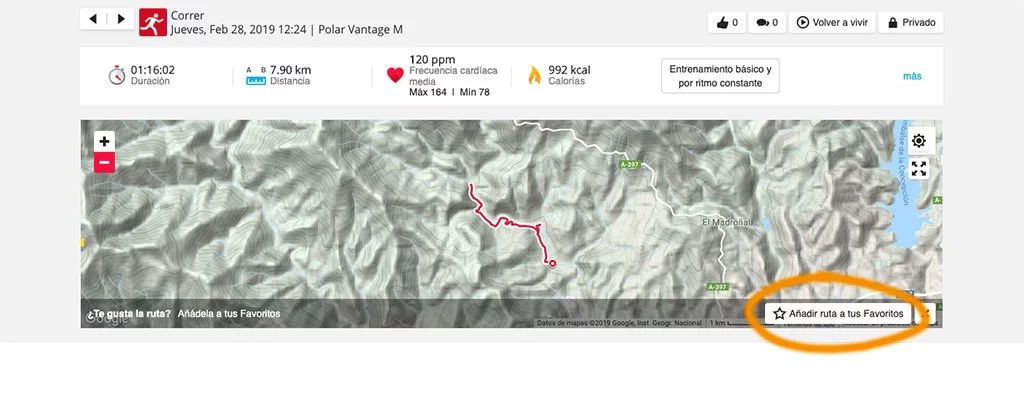
Tienes varias opciones para recorrerla:
- Dirigirte al punto inicial de la ruta
- Empezar la ruta por el punto más cercano. Por ejemplo en el caso de estar cerca de la mitad del trayecto y quieres empezar desde ahí y no desde el principio, el reloj te dirigirá al punto más cercano para seguir la ruta a partir de ese momento.
- Cualquiera de las dos opciones anteriores pero de forma inversa
Con la ruta seleccionada verás ahora un pequeño cuadrado en la pantalla de inicio del deporte con lo que se asemeja a un mapa, para saber que has seleccionado un trayecto.
Al iniciar el ejercicio se añadirá una nueva pantalla de navegación. Lo primero que aparecerá es la distancia al punto que hayas seleccionado (al inicio, al final o a mitad de ruta) y la dirección que tienes que seguir para llegar a él.
No hay brújula magnética en el reloj, por lo que para saber qué dirección debes tomar debes estar en movimiento para que el reloj sepa en qué sentido te estás desplazando. Es lo que se denomina «brújula GPS».
Una vez alcanzado el punto donde iniciarás tu ruta verás el trayecto a seguir en pantalla.
La información es bastante simple. Como ves sólo disponemos de la ruta a seguir (en líneas bastante rectas definidas por los puntos) y la distancia hasta completar la ruta, que en este caso es 3,61km.
Durante la navegación hay aviso de salida de trayecto (o de vuelta al mismo), pero no hay avisos de giro anticipado. Tampoco hay perfiles de altitud. La navegación que ofrece es bastante simple y está orientado más a un uso esporádico de la función que a algo más intensivo, pero no deja de ser lo que se ofrecía en el Polar V800.
Tanto Garmin como Suunto ofrecen más posibilidades en este aspecto como marcar y mostrar puntos de interés, navegar con mapas (en el Fenix 5 plus) o ver la ruta no como un mapa a seguir sino como un perfil de altura para saber cuánto nos queda por sufrir.
Todo esto está disponible exclusivamente en el Polar Vantage V; el Vantage M sólo disfruta de la opción de vuelta a inicio (también presente en el Vantage V) que, en caso de perdernos en cualquier momento de la ruta podemos activar para que el reloj nos marque en qué dirección debemos dirigirnos y cuánto nos queda por recorrer para encontrar el lugar desde donde partimos.
Es una indicación en línea recta por lo que si hay que superar obstáculos como montañas o ríos tendrás que buscarte la vida para sortearlo, pero el reloj no te indicará soluciones.
Notificaciones
Otra de las ausencias en el lanzamiento de los Vantage fue la ausencia de notificaciones desde el smartphone. Sí, se trata de relojes destinados principalmente a la práctica deportiva, pero ya hay ciertas funciones de reloj inteligente que se le presuponen a todos ellos. Y el mostrar notificaciones del teléfono móvil es una de ellas.
Sin embargo hubo que esperar unos meses, hasta la actualización 3.0, para que se hiciese realidad en los Vantage. Algo extraño ya que no es una novedad para Polar, ya los modelos anteriores incorporaban esta función. Bien es cierto que el sistema operativo está totalmente rediseñado, por lo que hay que volver a programar de cero. Mejor tarde que nunca.
Eso sí, hay algunas cosas que cambian con respecto al funcionamiento típico que pasaré a detallarte a continuación.
Por defecto las notificaciones están desactivadas, es necesario cambiar el ajuste en las opciones del reloj en Polar Flow. Esto podrás hacerlo desde la web o desde la app móvil.
En el reloj hay también otros ajustes para las notificaciones, lo cual lo hace ligeramente confuso. Porque aunque en el menú estén activadas las notificaciones, es necesario activarlo previamente en los ajustes indicados anteriormente. Lo que sí puedes hacer es tenerlas activadas en la app y después seleccionar en el reloj si sí o si no.
Destacar también que las notificaciones sólo se muestran si no estás entrenando, no hay posibilidad de poder decir que te muestre notificaciones durante una actividad.
A la hora de aparecer en pantalla también hay alguna diferencia con respecto a otros relojes. Cuando recibas una notificación en el teléfono, el reloj vibrará, pero no mostrará nada en pantalla por privacidad, para no mostrar notificaciones a todo el mundo.
Si en los 10 segundos siguientes a recibir la notificación giras la muñeca, entonces sí aparecerá de forma automática.
Eso sí, el giro tiene que ser bastante acusado. ¿Qué ocurre si quieres ver la notificación después de esos 10 segundos? Tendrás que acceder al apartado de notificaciones.
Esto es diferente para el Vantage M y el Vantage V debido principalmente a la ausencia de pantalla táctil en el M.
Cuando tengas una notificación pendiente de revisar podrás ver un punto rojo en la pantalla del reloj. En el caso del Vantage M ese punto se sitúa encima del botón inferior izquierdo.
Tendrás que pinchar en el botón y acceder al menú de notificaciones para verlas todas, y podrás desplazarte por ellas con los tres botones del lado derecho.
En cambio en el Vantage V el punto rojo aparecerá en la parte inferior de la pantalla, y no existe el menú de la imagen anterior.
En este caso simplemente tendrás que deslizar con el dedo para acceder a las notificaciones y, de nuevo, podrás operar en él con los botones o con la pantalla táctil del reloj.
Calendario de actualizaciones Polar Vantage
Es evidente que hay un elefante en la habitación, hay cosas que deberían estar ahí y que todavía no están. Entre ellas destacan las notificaciones y la navegación de rutas , dos cosas que se han convertido en funciones básicas de cualquier reloj de gama alta. No son cosas por las que preguntes porque simplemente supones que van a estar ahí.
No es lo único que falta, hay otras cosas que también estamos esperando. Suunto ya sufrió bastante con lo mismo cuando los Spartan llegaron al mercado y, al igual que hicieron sus vecinos, Polar también ha establecido un calendario de actualizaciones.
El primer paso es ponerlo por escrito, el segundo paso es cumplirlo y es lo que tenemos que ver. De momento Polar ha cumplido con el primer peldaño y a comienzos de diciembre lanzó la primera actualización incluyendo las funciones prometidas para esa fecha, esperemos que el resto de funciones sigan respetando los plazos prometidos.
Estas son las actualizaciones programadas y su calendario.
Actualización 3.0 – Principio 2019
Polar Vantage V
- Notificaciones del teléfono móvil
- Seguimiento de rutas con vuelta a inicio y navegación de rutas
- Mejoras para funciones existentes (básicamente, corrección de errores)
Actualización 3.0 – Principio 2019
Polar Vantage M
- Notificaciones del teléfono móvil
- Seguimiento de rutas con vuelta a inicio (pero sin navegación de ruta completa, eso sólo el Vantage V)
- Mejoras para funciones existentes (básicamente, corrección de errores)
> Actualización 11 de febrero
Polar ya ha lanzado la actualización 3 con todas las novedades prometidas para esta versión y algunas mejoras más. Estas son sus novedades:
- Esfera de reloj nocturna que indica estadísticas de sueño de la noche anterior
- Modo no molestar
- Notificaciones del teléfono móvil en el reloj
- Navegación de rutas en el Polar Vantage V y vuelta a inicio en el Polar Vantage M y V
- Menú de acceso rápido antes de comenzar el entrenamiento para seleccionar favoritos, rutas o temporizadores
> Actualización 26 de junio
Nuevo calendario ampliado por parte de Polar
Actualización 4.0 – Octubre 2019
- Soporte para satélites Galileo/QZSS/BeiDu, junto con mejoras para GPS y GLONASS
- Fitness Test
- Bloqueo de zona
- Detalles de vuelta en el archivo de entrenamiento: tiempo, distancia, ritmo medio, etc.
- Posibilidad de calibración manual de footpod
- Sleep Plus Stages
- Nightly Recharge
- Serene
- Posibilidad de dejar la iluminación activa durante el entrenamiento
- Alerta de inactividad
- Otras mejoras
Actualización 5.0 – Diciembre 2019
- Segmentos de Strava (sólo Polar Vantage V)
- Ritmo de carrera
Comprar Polar Vantage M | Polar Vantage V
Espero que este análisis completo te haya ayudado a decidir si es un dispositivo válido para ti o no. Todo el trabajo que realizo puedes consultarlo sin ningún tipo de coste, pero si quieres apoyar la web y con ello el trabajo que realizo, la mejor forma de hacerlo es comprar tu nuevo dispositivo a través de los enlaces que facilito a continuación. Y si no lo compras hoy, ¡acuérdate de pasar por aquí cuando vayas a hacerlo!
A través de estos enlaces no sólo conseguirás un precio muy competitivo y la mejor atención al cliente, sino que además yo recibiré un pequeño porcentaje sin que a ti te cueste ningún desembolso adicional. Es eso lo que permite que pueda seguir ofreciéndote pruebas como esta en la página.
No lo vas a comprar, ya lo tienes o Amazon no es una opción; ¿pero te gustan las pruebas que realizo y quieres mostrar tu apoyo a la página? Entonces considera suscribirte como miembro VIP. Por encima de todo estarás ayudando a soportar la página, pero además disfrutarás de beneficios exclusivos.
Si tienes dudas, recuerda que tienes la sección de comentarios en la parte inferior, donde trataré de resolver todas tus preguntas.
Opinión de Polar Vantage M y Vantage V
Creo que Polar ha hecho un buen trabajo con los nuevos Vantage, especialmente por las nuevas métricas que incluyen y que son específicas de estos modelos. Training Load Pro es una función que puede ser de gran ayuda para poder valorar qué intensidad debes aplicar a tu entrenamiento diario y cómo ir jugando con las cargas.
Sí me gustaría que esos mensajes que he indicado se modificaran para que quede totalmente claro que se está hablando de intensidad de entrenamiento y no entrenamiento en sí, pero una vez que has pasado por aquí seguro que te ayuda a comprenderlo perfectamente.
Tal vez la opción de Recovery Pro presente en el Vantage V no sea tan útil, al menos a simple vista. Esto es así porque es necesario algo más de datos acumulados a lo largo del tiempo para poder advertir tendencias y poder comprender qué información te aporta la medición de la variación de frecuencia cardíaca en reposo.
Y por supuesto ser el primer reloj capaz de estimar la potencia en carrera de forma independiente sin accesorios externos que, por mucho que sea una estimación y no un valor real, puede ser útil en muchos escenarios (y no lo dudes, es algo que cada vez va a ser más relevante, igual que lo ha sido en ciclismo). Hay muchas otras cosas interesantes en los nuevos Vantage, como un sensor de pulso óptico que está funcionando bastante bien y que creo todavía tiene margen de mejora. O una autonomía sobresaliente. O un GPS de bajo consumo que a pesar de estar todavía algo verde no muestra fallos importantes.
Es posible que los Vantage M y Vantage V no sean juzgados por las funciones novedosas que ofrece, y que se haga por las ausencias que todavía muestran
Desgraciadamente es posible que los Vantage M y Vantage V no sean juzgados por estas funciones, que es en lo que destacan frente a la competencia; sino por otras carencias que tienen y que Polar ha considerado que eran menos importantes o no necesarias para cumplir su calendario de salida al mercado. Pienso principalmente en la navegación de rutas y en las notificaciones de móvil. Y no me entiendas mal, el único culpable de esto es Polar y nadie más.
Estoy de acuerdo con el fabricante en que ambas prestaciones pueden considerarse secundarias en un reloj de entrenamiento (bueno, la navegación algo menos), pero el problema llega con las comparaciones. Cuando tu competencia sí ofrece navegación de rutas y notificaciones de móvil y tú no lo haces tienes un problema, porque en las comparativas cojeas.
Es cierto que Polar ya ha confirmado que todo esto está en vías de ser solucionado, pero el problema es que en muchos sitios los usuarios verán escrito que el reloj carece de «tal y tal», porque esos medios escriban algo al principio y no se vuelvan a acordar de revisarlo cuando ya esté disponible -algo que como ya sabrás, no ocurre en esta página-.
Espero que estas cosas lleguen pronto. De momento el calendario de actualizaciones ha quedado bastante claro y en su primera actualización han cumplido en fecha y forma. Si continúan cumpliendo estas ausencias más notables estarán resueltas para comienzos de 2019.
Dejando de lado todo este tema, mi opinión respecto a ambos modelos es bastante positiva. Obviando las notificaciones, navegación y posibilidades de bloqueo de zonas de entrenamiento, las novedades que Polar ha introducido me parecen positivas. Tanto por posibilidades que ofrece como lo sencillo que resulta para el usuario final.
Me gusta que Polar sea fiel a ellos mismos y se hayan olvidado de perseguir a Garmin en número de prestaciones. Es una carrera que saben que no pueden ganar y hacen bien en no perseguirla. En su lugar están apostando por lo que ellos siempre han sabido hacer, que es precisamente lo que les hace destacar frente a la competencia. Y lo cierto es que a pesar de esas carencias, ambos relojes me han estado acompañando en la preparación de una maratón, y no ha habido muchas cosas que haya echado de menos. Supongo que eso es una buena señal, ¿no?
¿Te ha quedado alguna otra duda? ¿Cuál es tu opinión de lo último de Polar? Ya sabes, debajo tienes los comentarios, úsalos.
¡Gracias por leer!

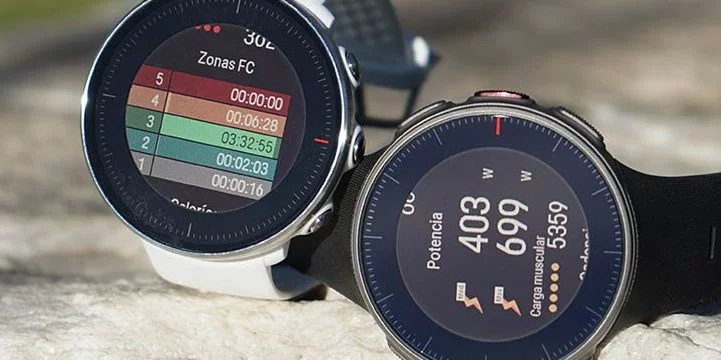
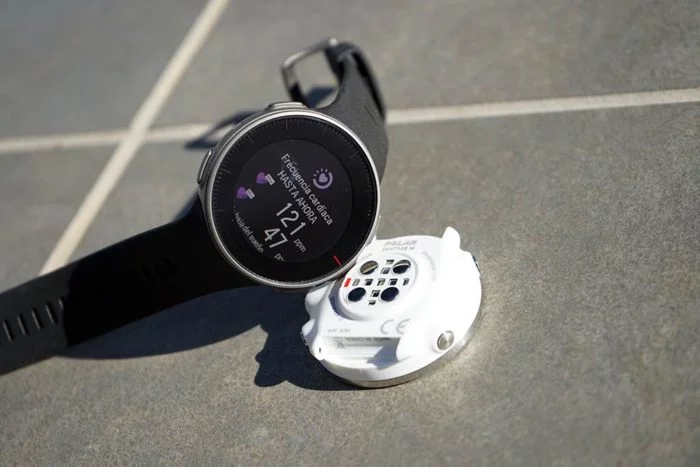
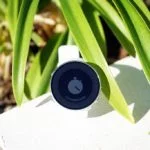
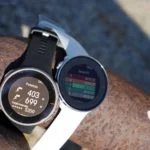









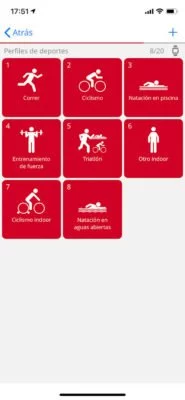
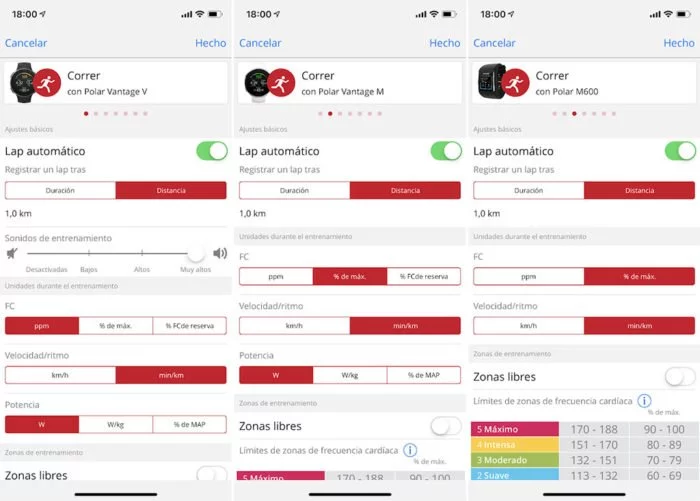

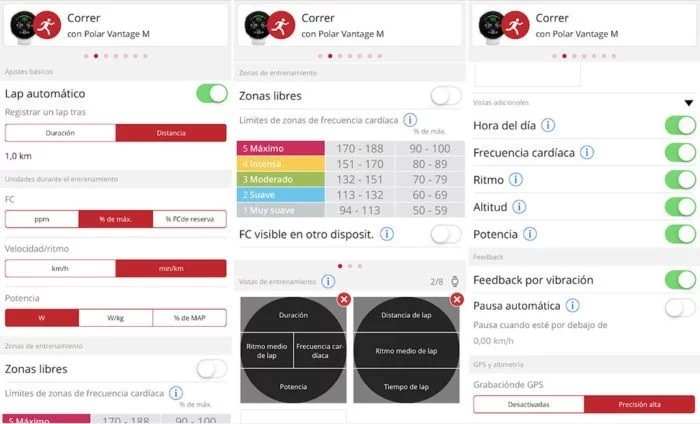
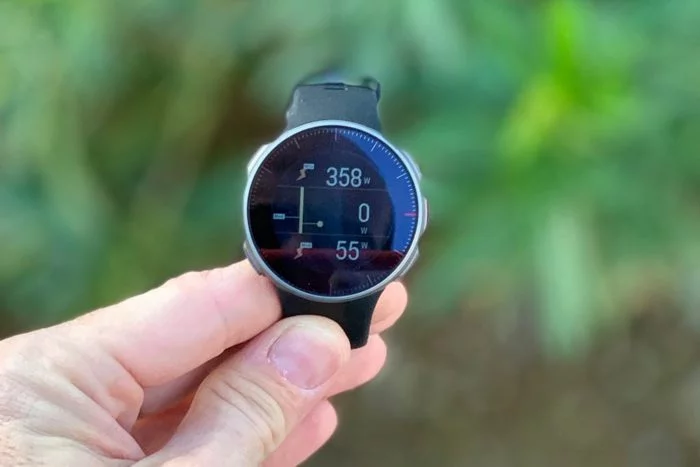
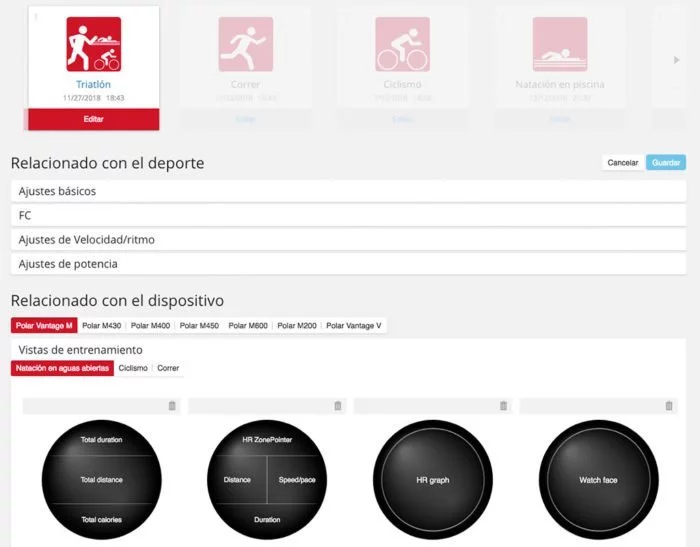

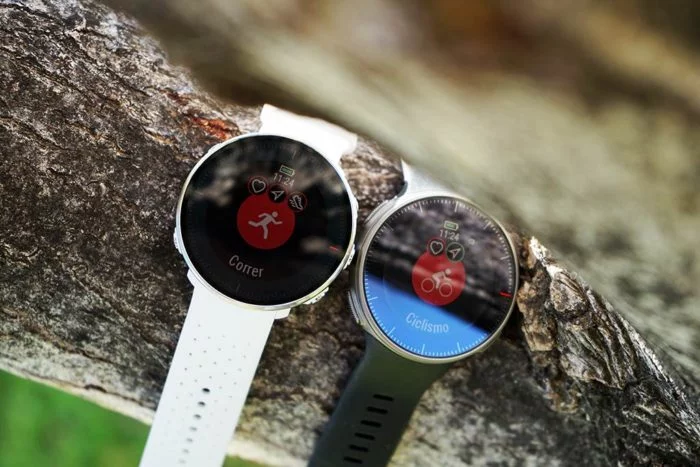
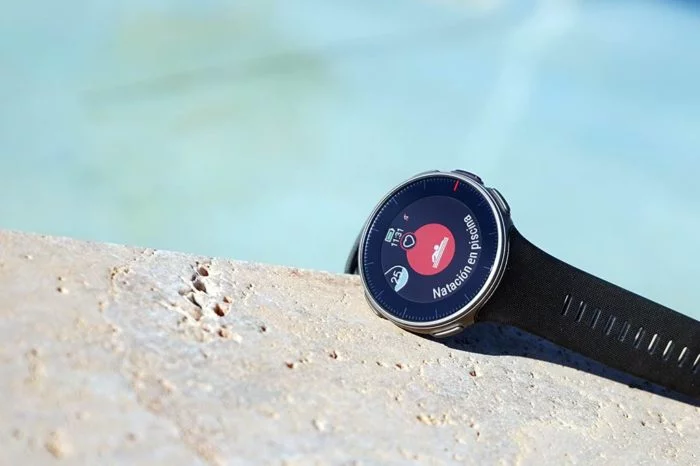
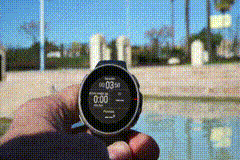
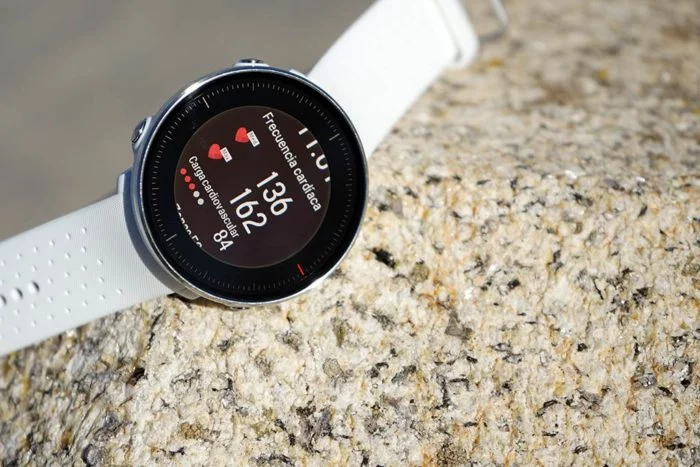
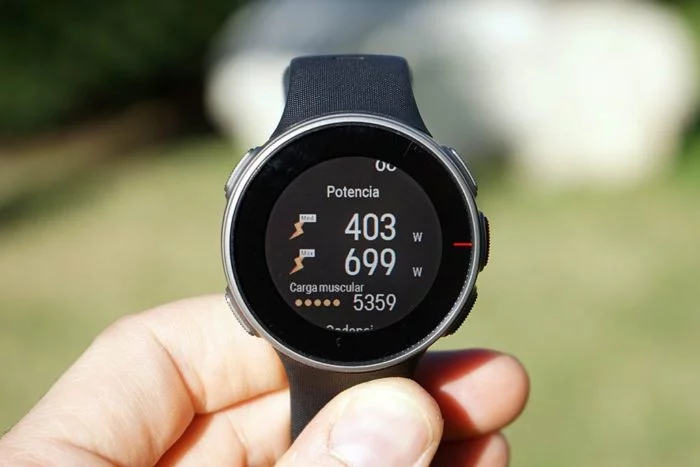

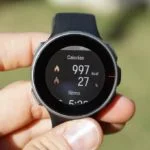
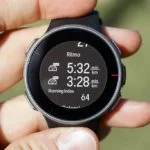
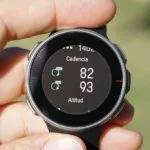
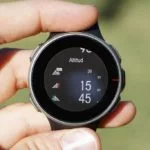
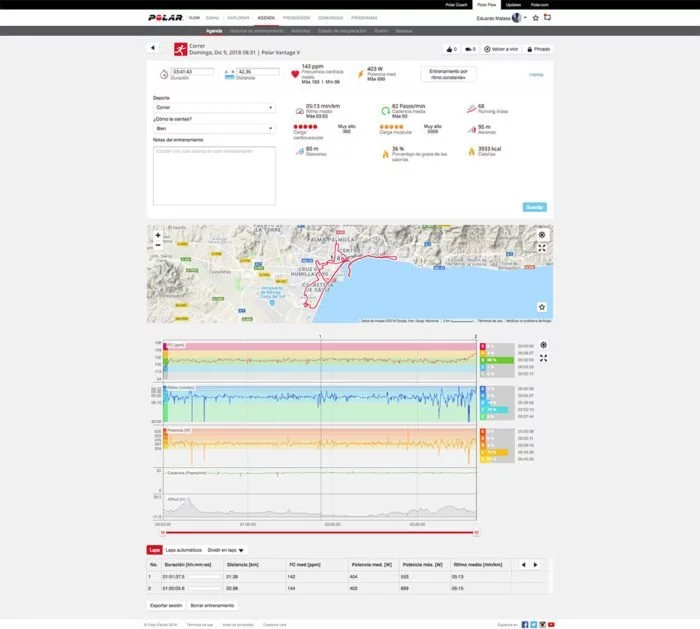
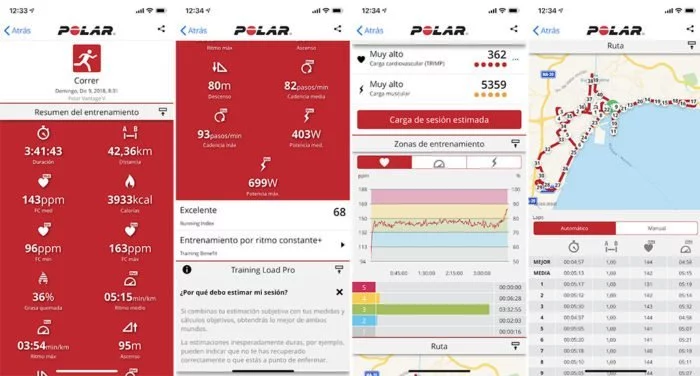
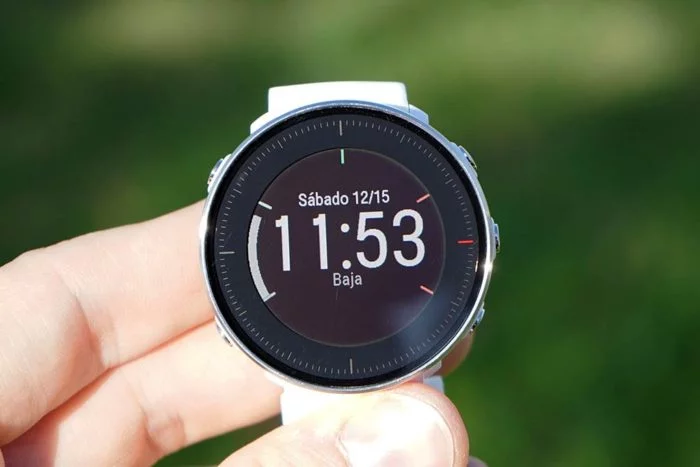
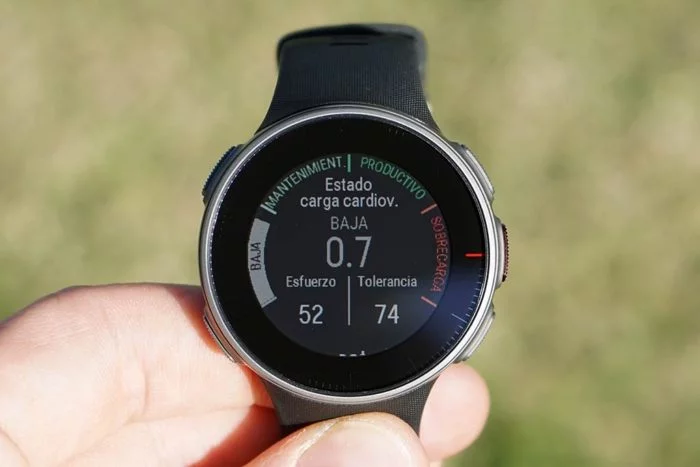
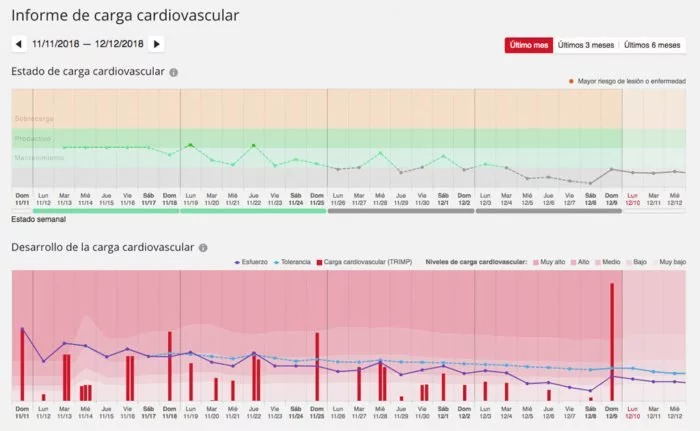
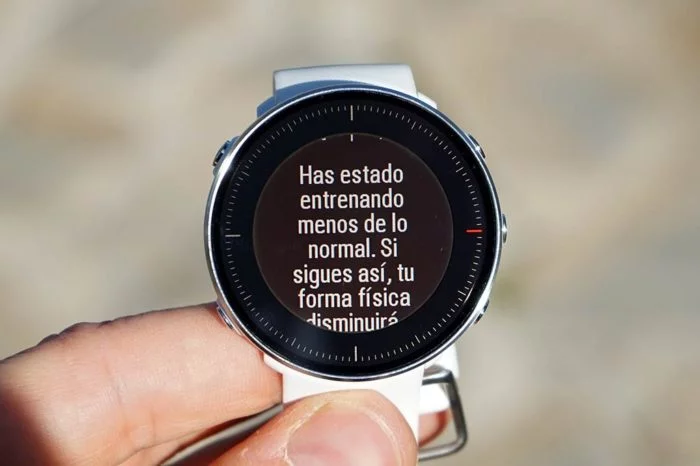


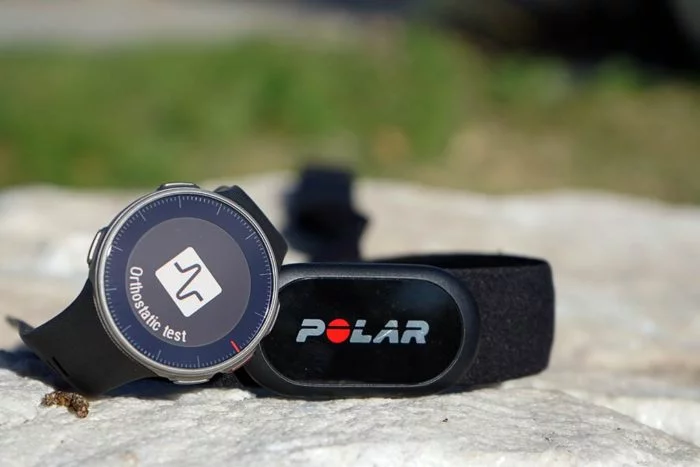
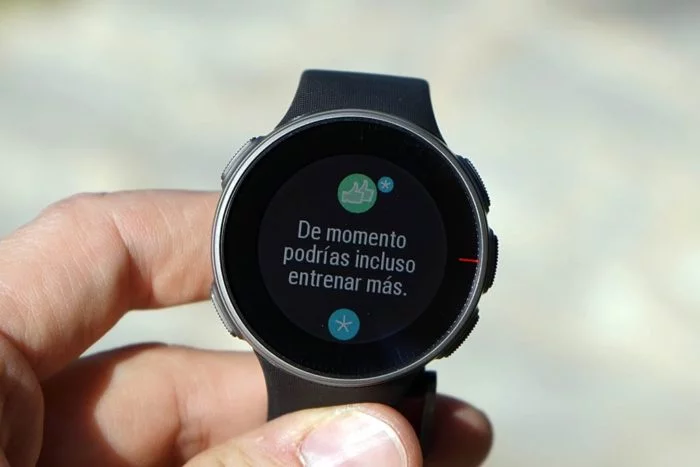

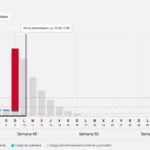
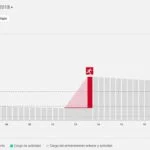
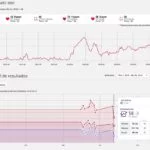
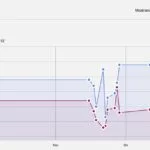


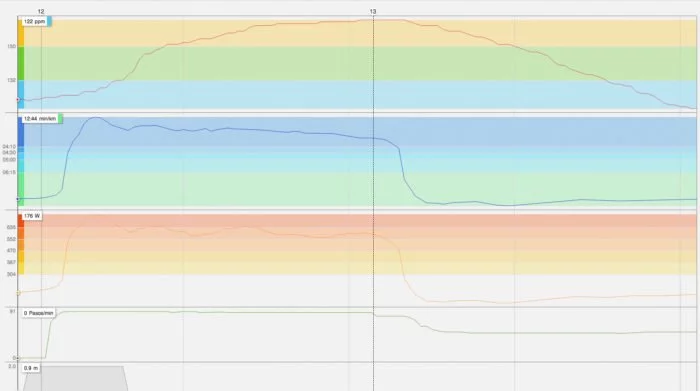
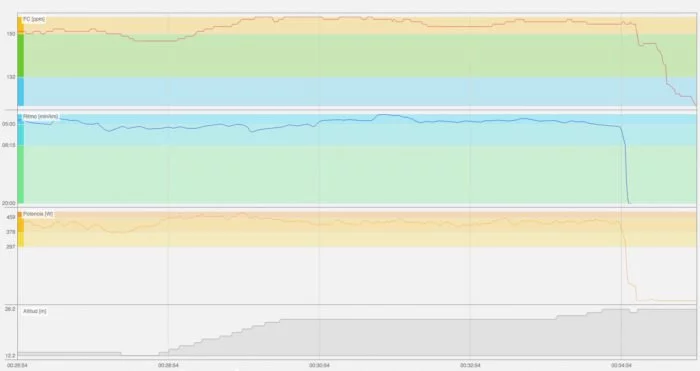
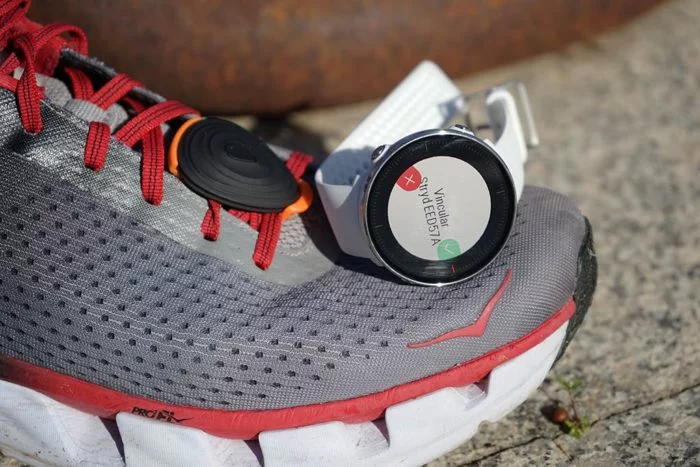
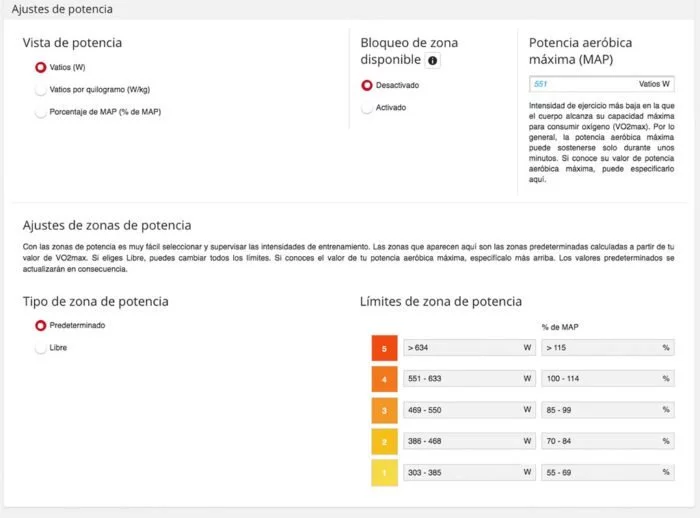
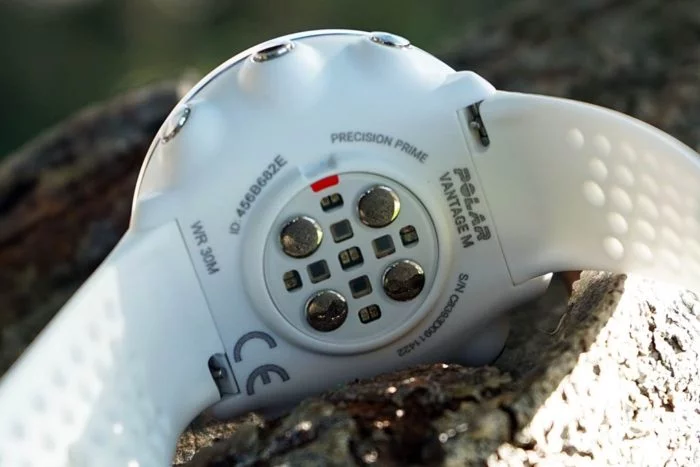
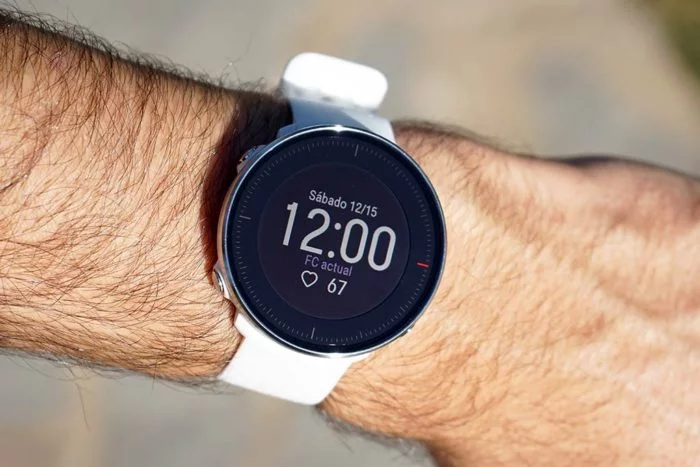
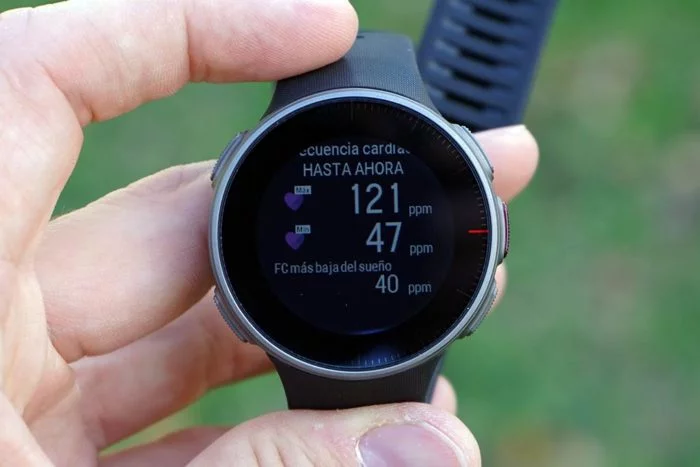
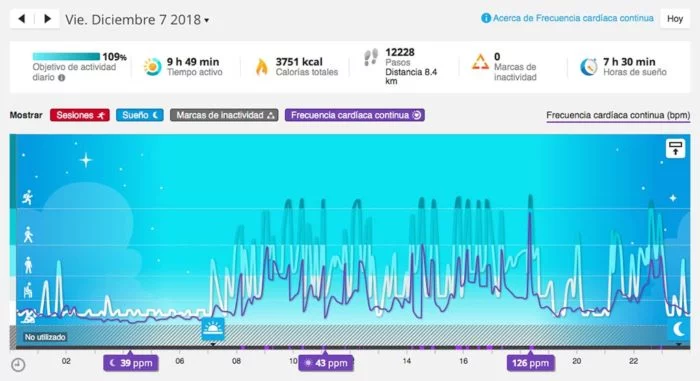
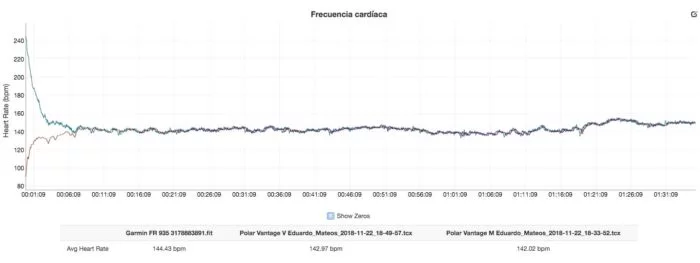








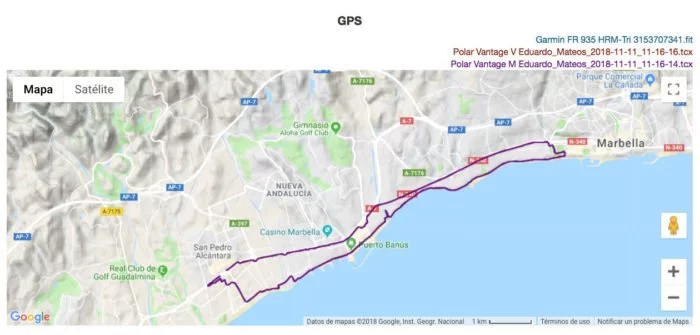
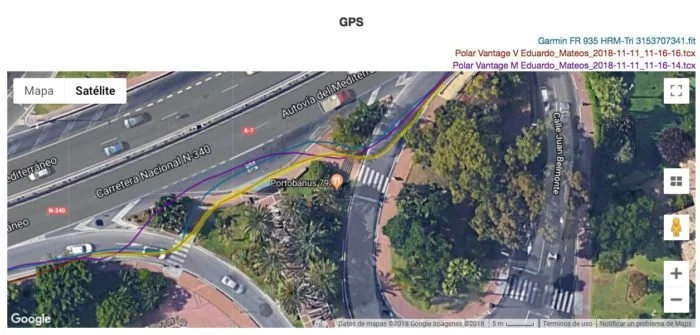
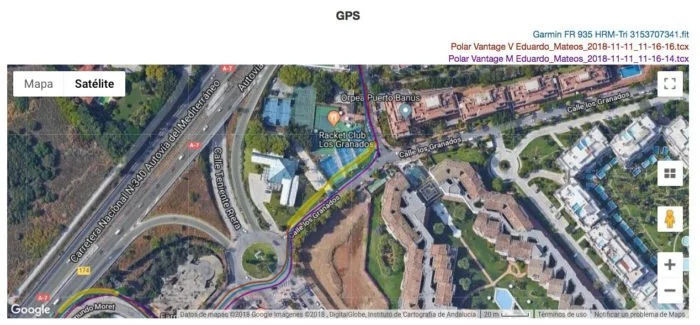
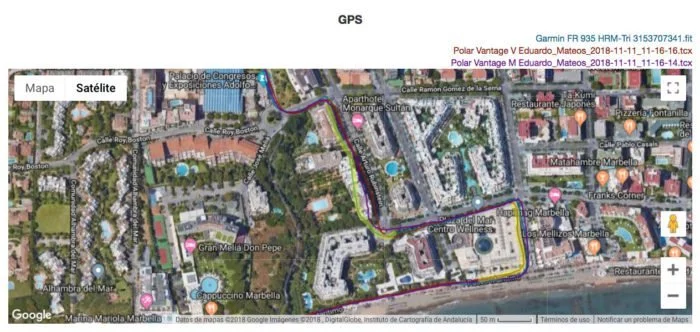
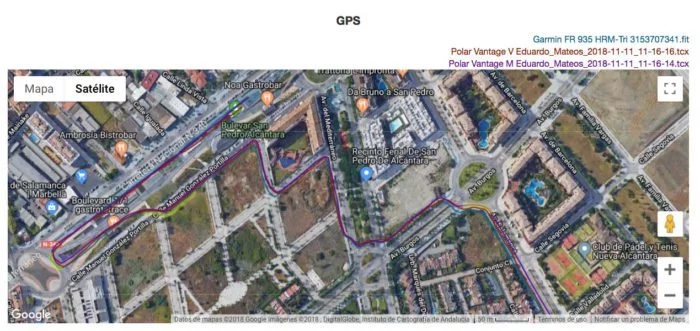
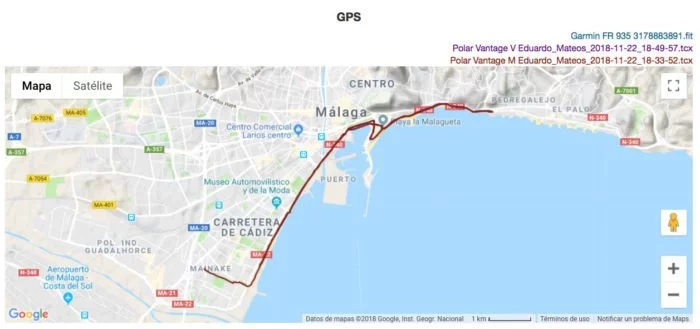
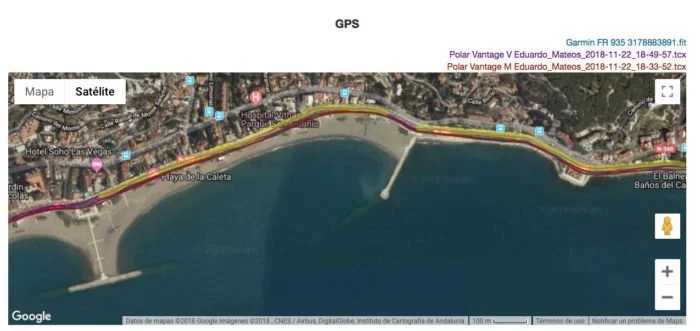
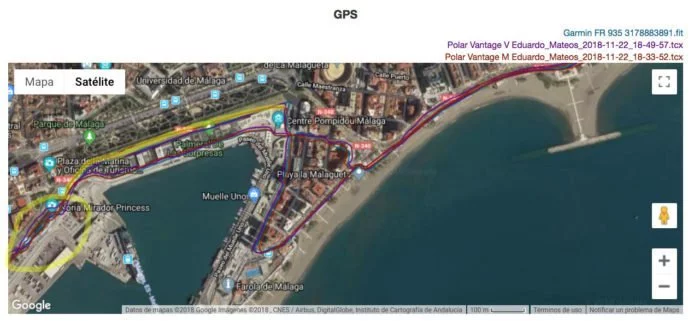
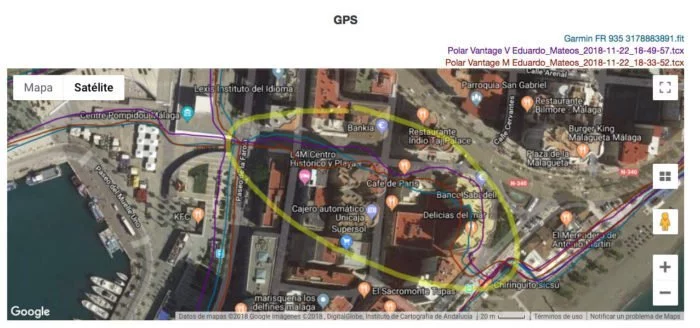
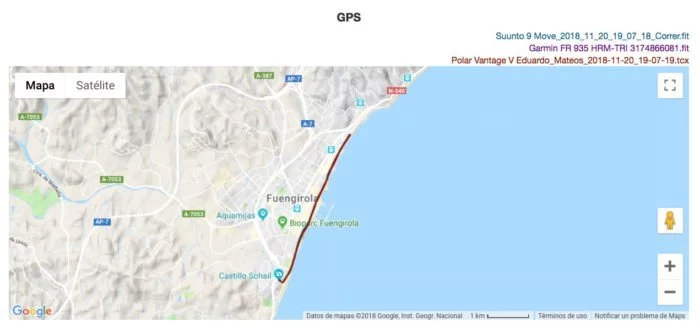
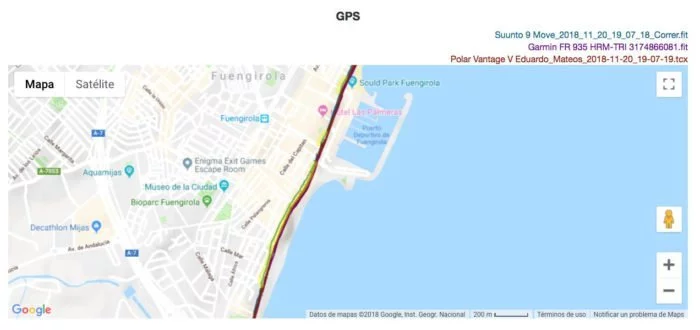
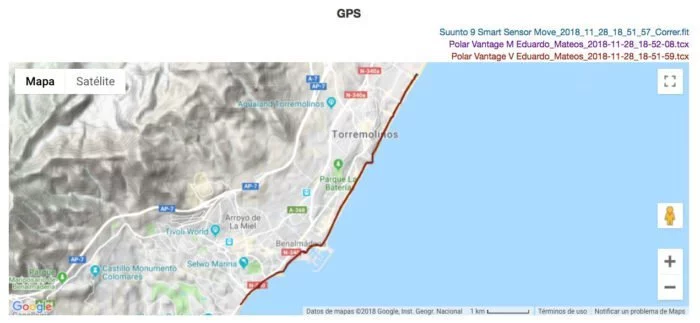

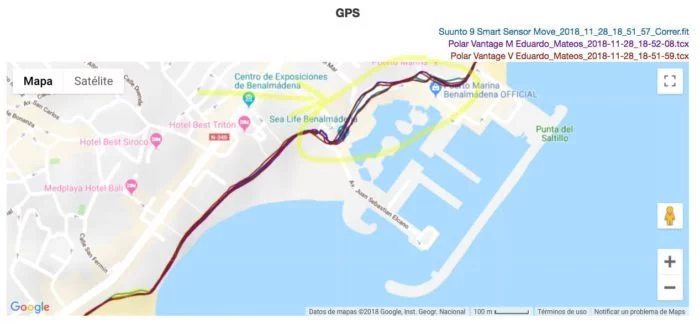
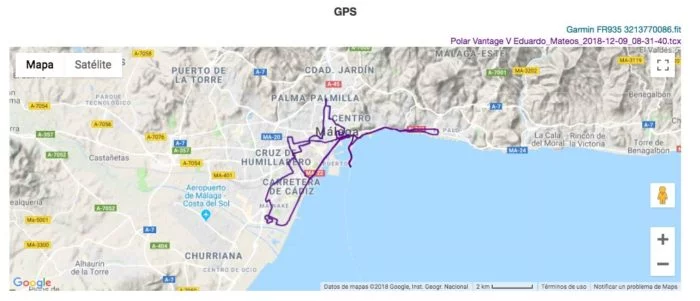

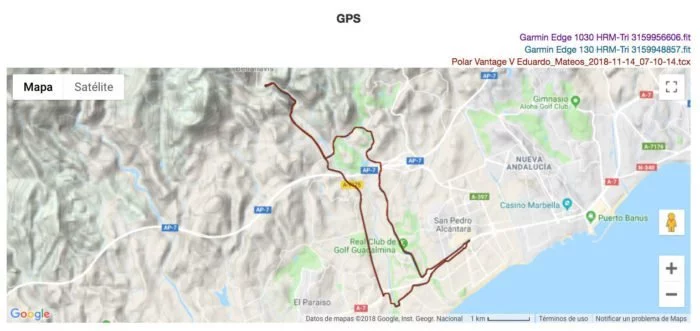
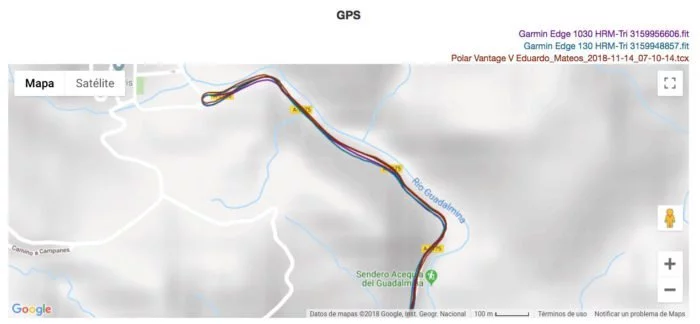
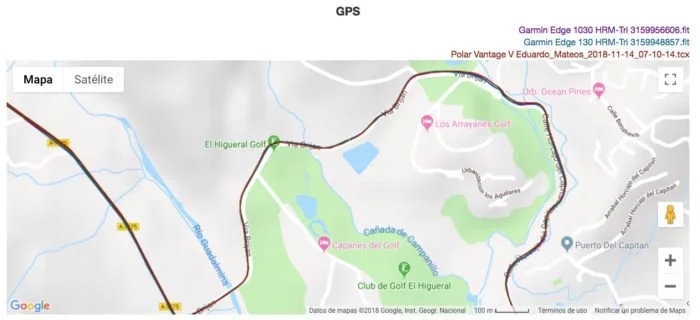

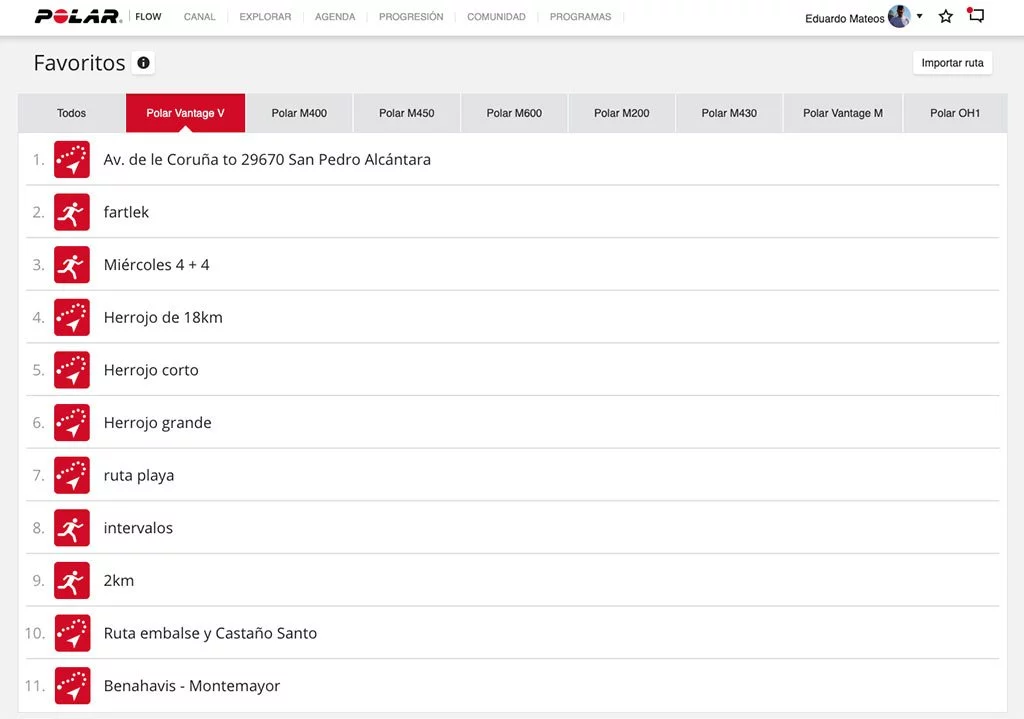
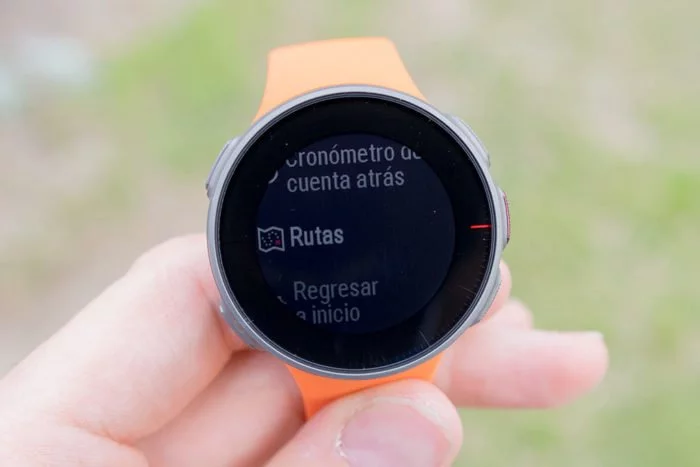
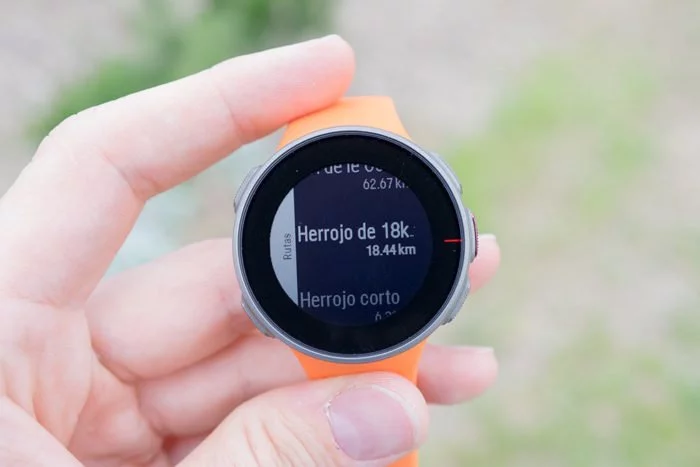
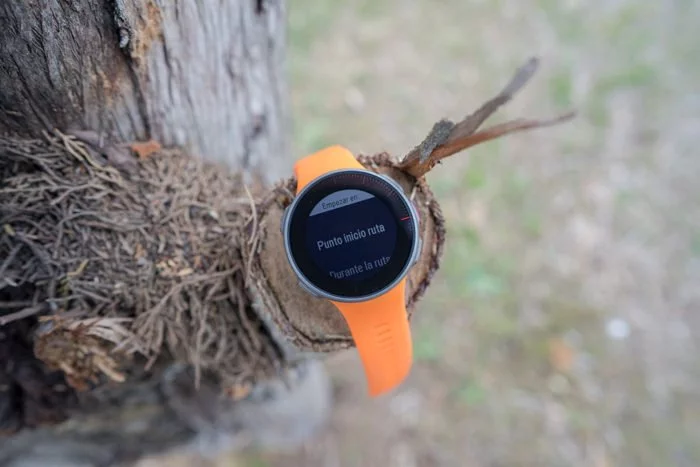
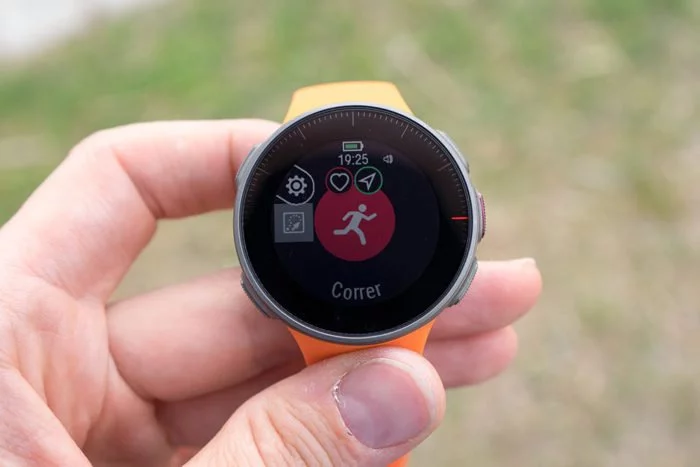
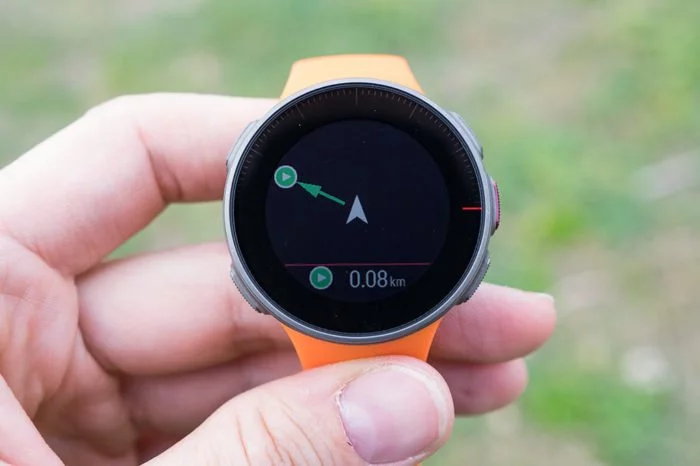

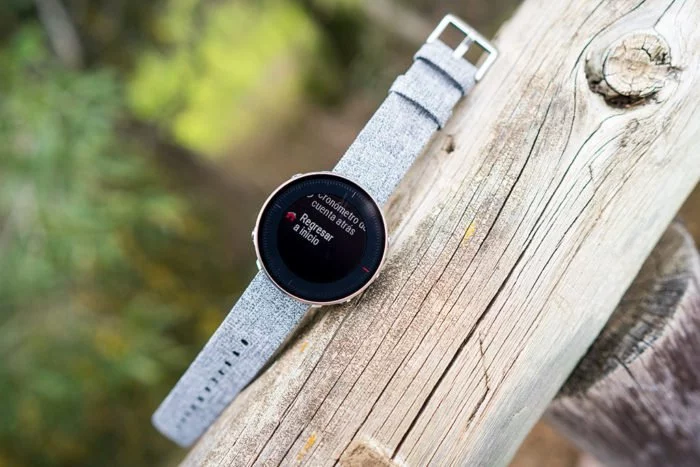
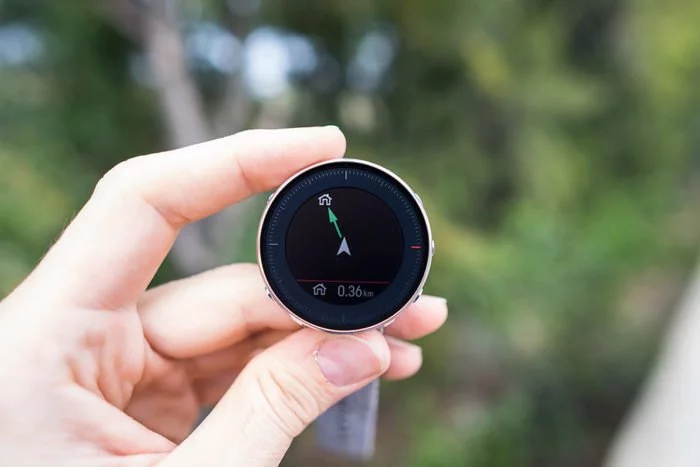
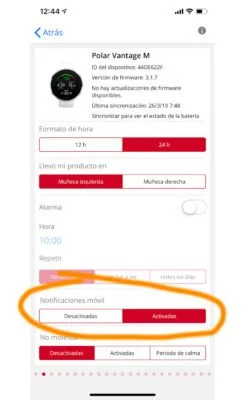
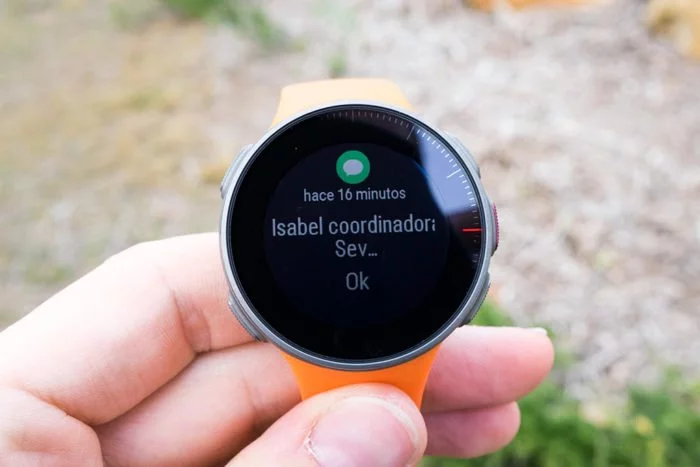
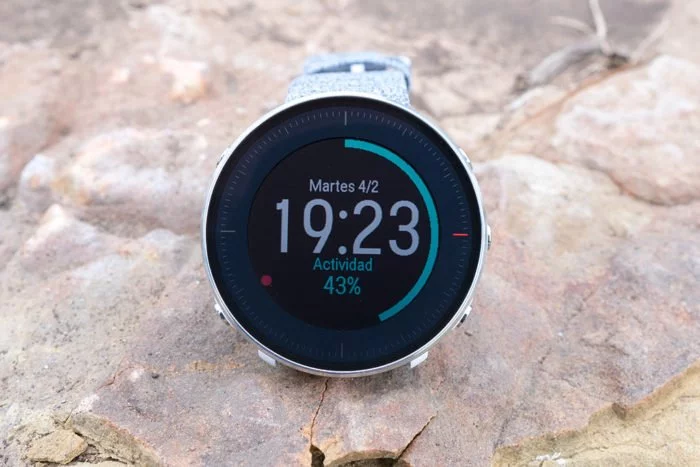
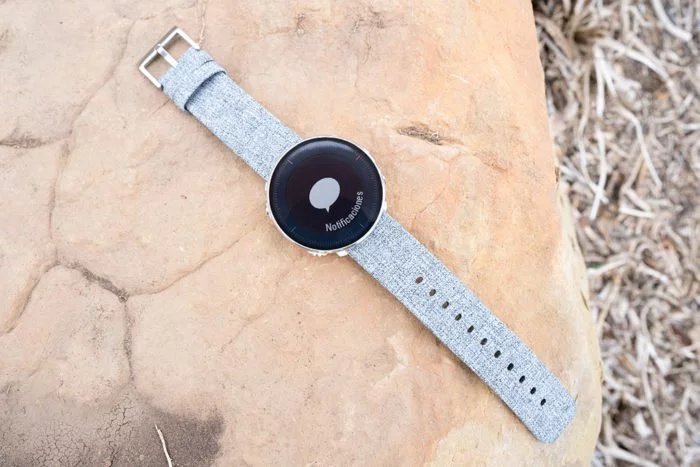
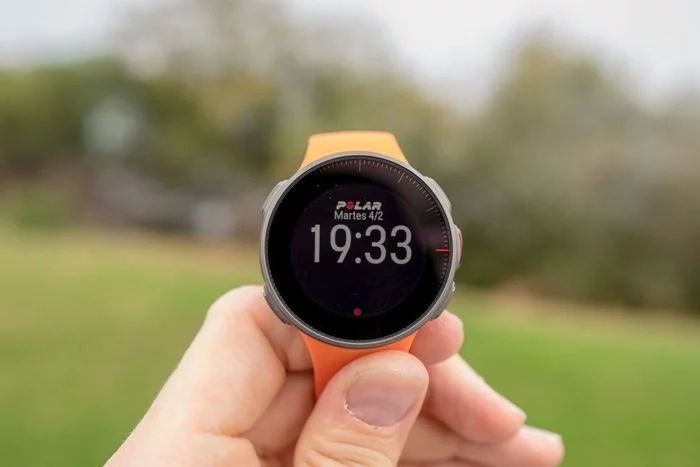
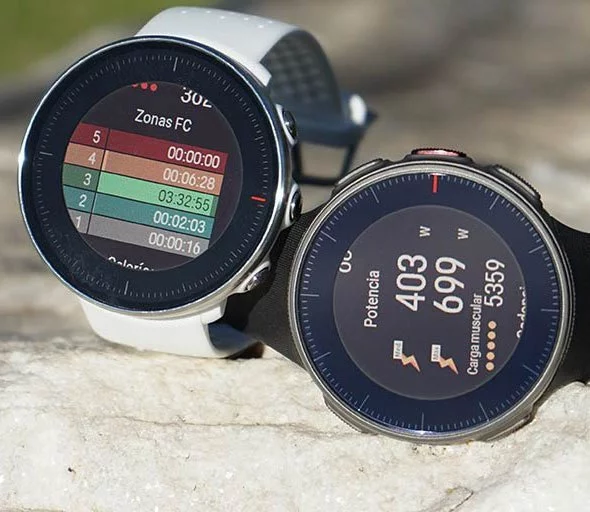
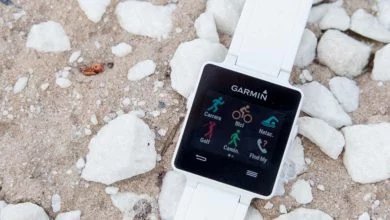
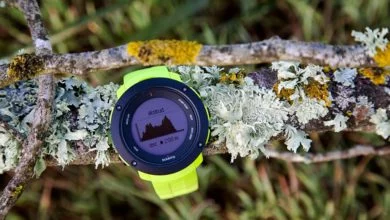

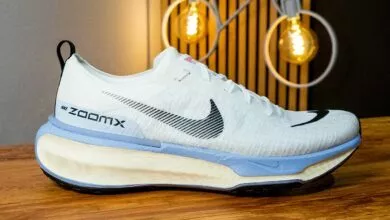
Primero!
Muchas gracias Eduardo, una prueba excelente como siempre.
La verdad es que me lo esperaba peor por lo que comentas de las funciones que todavía están por llegar, pero sí es interesante lo que ofrece a nivel de seguir el entrenamiento y la recuperación.
Me había prometido esperar a las novedades de navegación y las demás actualizaciones… pero igual me arriesgo y lo compro ya.
Gracias Jaime
Pintan muy bien, pero el hecho de no poder seguir rutas… Me parece un error de estrategia considerable. Aunque en «un futuro próximo» pueda disponer de ello el V. A día de hoy, con la competencia que existe, y el grado de exigencia del usuario tipo, me parece inconcebible.
En fin, seguro que ellos ya han analizado el impacto que eso puede suponerles.
La prueba, como siempre, espectacular. Muy bien.
Gracias.
Realmente la navegación no estuvo anunciada al principio. No sé si el anuncio de añadirlo posteriormente ya estaba planificado o se debió tras la presión de los usuarios, pero sin duda es lo que más se le ha criticado al Vantage V.
Gracias Eduardo por otra review impecable!
Tengo el Vantage V y en mis comparaciones con el suunto 9 llego a las mismas conclusiones.
Una pregunta, que he realizado a polar sin respuesta, sabes como se puede editar la pantalla de registro de lap para ver otra informacion que no sea el tiempo de lap?
Muchas gracias!
Gracias a ti.
No hay posibilidad de modificar la información que aparece en la pantalla de lap, son los datos fijos. Al menos así es de momento, pero no tengo información que indique que se vaya a poder modificar.
Excelente review como siempre, me han encantado sobre todo por batería, sensor y funciones.
Aunque no entiendo como a veces quitan prestaciones que para mi son súper útiles como la calculadora de tiempo final del M430 o el ritmo de carrera que tiene el V800. Entiendo que porque no las usa mucha gente, pero lo veo básico a la hora de mejorar marca en una media maratón por ejemplo.
Gracias José Ángel
No siempre son funciones que desaparecen. Polar ha cambiado totalmente el software, por lo que hay que hacer y programar todo para el nuevo sistema. Por eso hay cosas que tardan más en llegar, porque no es como pasar de Windows 7 a Windows 10 y volver a instalar un programa. No existe esa compatibilidad y hay que hacerlo todo de nuevo. Claro, para eso hace falta tiempo, recursos, desarrolladores…
Muchas gracias por la revisión, muy completa. ¿Hay alguna esperanza de que mejore el tema de pulsaciones bajo el agua? Creo que tanto en el OH1 como en el M200 eran aceptables, ¿verdad? En la página de actualizaciones han concretado la siguiente y ha pasado de «principios de» a Febrero. He leído por algún lugar que Polar da descuentos a los poseedores del V800 que quieran cambiarse, ¿sabes si es un rumor falso o tiene algún fundamento?
Sí, el OH1 tenía un buen resultado en natación. Pero la ubicación del sensor es diferente y está en una zona mucho mejor para el registro de la frecuencia cardíaca. No veo sencillo que se mejore el registro porque la dificultad principal es dónde llevamos el reloj y cómo le afectan las brazadas y el agua. Pero a lo que sí veo posibilidades es a que se pueda descargar datos grabados con el Polar H10.
Sobre lo del descuento para usuarios del V800, no he escuchado nada al respecto.
Hola Eduardo, una pregunta igual un poco tonta nunca he tenido un polar se pueden apagar el reloj de algún botón o en algún menú tipo los Garmin?
Y otra pregunta para correr y entrenar en asfalto cual crees que sería la mejor opción el Vantage M o el forerunner 645 que he visto que con alguna oferta solo hay 40 euros de diferencia. También hago ciclimo pero tengo un Garmin edge. Muchas gracias por el gran trabajo que haces en la web
No, no es posible dejar apagado un Polar.
Ambos te van a hacer el servicio perfectamente, aunque quizás en tu caso optaría por el Garmin simplemente porque ya estás en la plataforma y será más sencillo para tenerlo todo organizado.
Muchas gracias por la revisión, impecable.
Me gustaría saber entre este Vantage V y un Suunto 9 baro, cual comprarías? Teniendo en cuenta la diferencia de precio y prestaciones.
Muchas gracias.
Pues son bastante diferentes y el usuario objetivo está bastante diferenciado… El Vantage es un reloj más para triatlón con una plataforma muy completa en cuanto a entrenamientos mientras que el Suunto está más destinado a montaña. Y el tamaño de ambos es también muy diferente, el Suunto es mucho más voluminoso. Es una elección bastante personal.
Hola Eduardo.
Llevo 15 dias con el M y la verdad que algo decepcionado, que me estoy planteando cambiarlo por el Garmin 735
Echo en falta el entrenamiento en zona de frecuencia cardiaca bloqueada.
Tambien, no se si por fallo mio, pero el programar un entrenamiento y pasarlo al reloj, que hacia con el M400, no consigo hacerlo.
Que opinas? Seguir con el M o cambiar al 735? Nadar y correr…
Gracias
Sí, todavía tiene que llegar el bloqueo de zonas, según me indicó Polar debería estar en la actualización de febrero.
En cuanto a la programación de entrenamientos échale un vistazo, porque yo sí he podido hacerlo sin problemas. De hecho sincronicé un entrenamiento antiguo que tenía en la plataforma.
Si ya eres usuario de Polar y tienes todos tus entrenamientos en su plataforma sin lugar a dudas es lo más cómodo. Pero ya conoces qué es lo que hay en Polar y lo que ofrece Training Load Pro. Tanto eso como su sensor de pulso óptico son los aspectos más importantes del Vantage M, es lo que tienes que valorar con respecto al 735XT.
Hola, una consulta para running y triatlón de media distancia (70.3), con cuál te quedas un Vantage M, 735xt o un Suunto Spartan Trainer?
Gracias
Para triatlón no me hace mucha gracia el Suunto, principalmente porque no hay posibilidad de crear un perfil de duatlón y es algo que todos terminamos haciendo alguna vez.
En cuanto al Polar y el Garmin cualquiera de los dos sirve perfectamente para la función. Ya es decisión personal por cuál decantarte.
Pero sabes tú si el 735 será descontinuado pronto y conviene esperar por lo nuevo que pueda sacar Garmin?, o este modelo seguirá teniendo actualizaciones?
Para 2019 espero algo nuevo en el segmento de triatlón, pero no tengo muy claro si será para sustituir al 735XT, 935 o simplemente para completarlo (como ha ocurrido con la gama Fenix). De todas formas el 735XT sigue siendo vigente a día de hoy.
¡Hola!
¡¡Muchisimas gracias por este gran analisis!! Aun y todo, das a entender que los Pola Vantage no están destinados para correr por montaña (o así lo entiendo yo por lo menos, si no es así pido mis disculpas), ¿podrías especificar por favor por qué? Yo lo usaría principalmente para correr en montaña, pero me quedo con la duda… A ver si me aclaras este tema.
¡Gracias de nuevo y un saludo!
No es que no estén destinados a correr en montaña, simplemente que otros modelos están mucho más orientados a ese uso con funciones y métricas específicas que los Vantage no tienen.
Hola Eduardo,
Muchísimas gracias por este pedazo de análisis.
Estoy pensando en comprar un pulsómetro en torno al precio del Vantage M y dudo sobre todo entre el propio Vantage M y el Vivoactive 3.
Lo voy a utilizar principalmente para correr. Me gustaría poder configurar al menos carrera libre, series y alertas por ritmo cardiaco. También lo voy a utilizar para natación ocasional en piscina. Después de leer tus análisis, tengo la idea de que ambos ofrecen una calidad similar en cuanto a GPS y ritmo cardiaco, pero el Vantage M está algo más orientado al deporte en sí (con el Training Load Pro, natación en aguas abiertas, modo triathlon…) mientras el Vivoactive 3 está algo más orientado al smartwatch/fitness tracking (con el NFC, música, monitorización del stress…). ¿Crees que es una idea correcta?
Me atraen las funciones smartwatch pero no sacrificaría funciones deportivas (especialmente de correr) por ellas.
¿Qué me recomendarías?
Muchísimas gracias de antemano.
Sí, básicamente tienes el concepto bien cogido.
Las prestaciones en carrera son bastante similares, pero lo que difiere es la parte de Training Load Pro que tienes en el Polar y que no está disponible en el Garmin. Esa es la diferencia más notable.
Hola Eduardo,
Lo primero felicitarte por las Reviews, increíblemente detalladas, gran trabajo!!!
Yo estoy un poco en la misma duda entre el vivoactive 3 y el vantage M. Por una lado me llaman las métricas del Training Load Pro del polar, y el vivoactive su versatilidad para otros deportes y con connect IQ. He visto que en el Garmin se pueden obtener métricas de TRIMP a través de alguna app, pero supongo que no llegará al nivel del Training Load de polar. Si estas app fueran fiables igual me inclinaría por el Vivoactive 3.
También quería preguntarte acerca de la visibilidad de las pantallas, ¿cuál dirías que se ve mejor?
He leído algunas críticas acerca de la visibilidad de la pantalla del Polar, no sé si tiene problemas de visibilidad siempre o solo es de noche por poco brillo de la pantalla. Por las fotos, a plena luz diría incluso que se ve mejor el Polar (con un negro muy negro y mucho contraste), pero no he tenido la oportunidad de verlo en directo. ¿Qué me dices de esto?
Muchísimas gracias!!
En la primera versión del firmware de los Polar la iluminación automática no lo hacía al máximo, esto se corrigió ya en la segunda. No tengo problemas de visibilidad con ninguno de los dos, si bien es cierto que la fuente de Garmin quizás es algo más legible que la de Polar.
En cuanto a tus dudas, si los valores de análisis de entrenamiento son importantes para ti sin duda el Polar es mejor opción. En ese sentido el Vivoactive 3 es más limitado.
Hola Eduardo.
Enhorabuena por el análisis, muy bueno.
Mi duda es si el Polar Vantage M es compatible con el sensor de FC de pecho H7?
Sí, por supuesto
Hola Eduardo,
He adquirido recientemente un Polar Vantage M, y no sé como puedo avanzar
manualmente entre fases y/o intervalos de un entrenamiento creado por
fases.
Es decir, ayer por ejemplo, cree un entrenamiento de carrera por fases y
queria saltarme una parte del calentemiento, pero no podia hacerlo
manualmente, tenia que esperar a que se cumpliera el objetivo que creé.
¿Existe alguna manera de poder finalizar una fase y continuar con la
siguiente de manera manual?
Gracias, un saludo.
No, tendrías que configurarlo para paso manual, pero sí he configurado un objetivo debes cumplirlo
Hola Eduardo. Gran analisís, gracias y enhorabuena!
La pregunta del millón: Garmin Fenix 5 (que ahora se puede encontrar por 365 €) o Polar Vantage V, cual comprarías.
Las actividades para las que la usaría serían running, trail running, senderismo y bicicleta.
Gracias y un saludo.
Pues sin desmerecer al Vantage V (que creo que es un buen reloj y que Polar ha hecho un gran trabajo con Training Load Pro) es evidente que el Fenix 5 ofrece muchas más funciones. A falta de ver qué ha pensado Polar para la navegación de rutas, el Garmin se ajusta mejor al perfil de uso en trail running y senderismo; no sólo por la navegación sino por el resto de funciones destinadas al uso en montaña. Y si además es más barato…
Eso sí, elijas el que elijas… ¡recuerda comprar a través de los enlaces de Amazon para colaborar con la página!
Excelente artículo, solo me surge una duda que ni leyendo el manual, ni escribiendo a polar logro solucionar, no encuentro en ningún lado el cronómetro de intervalos y cómo introducir el cronómetro en las vistas de entrenamiento, te agradecería muchísimo si me pudieras ayudar con este tema, por más que busco en editar perfil de deporte, en el reloj y en toda la app no logro encontrar. Un saludo y muchas gracias
Tienes que añadirlo en los perfiles de deporte de Polar Flow, bajo la pestaña de «Fullscreen»
Hola Eduardo , antes que nada enhorabuena por la review, excelente , en cuanto al sensor de pulso parece ser que hay una diferencia grande entre el polar V y el fenix 5 o suunto 9 que puntuacion en una escala de 10 estarían estos tres modelos . Gracias
El sensor óptico es algo superior en el Vantage, pero tampoco es una diferencia enorme. Son todos muy similares, pero el del Polar está un puntito más allá.
En primer lugar enhorabuena por la review, impresionante la cantidad de detalles que aportas, hasta que no la he leído no tenia una idea clara de todo. Quisiera pedirte opinión para comprar un nuevo reloj. Tengo el Polar M400 y dudo entre suunto apartan trainer, Garzón 735xt y Polar Vantage M. Lo uso principalmente para correr pero quiero que me sirva para bici y spinning. Soy corredor popular hasta 21k tanto en asfalto como en montaña, con la idea de hacer próximamente un 42k de asfalto. Gracias por adelantado y sigue con este impecable trabajo que haces.
Juanjo, échale un vistazo a la Guía de compra de relojes GPS, donde encontrarás todo lo que recomiendo según el tipo de uso y los por qué
Muchas gracias!! Así se analiza un reloj, si señor.
No como otros, diciendo sólo lo q anuncia la marca.
Un 10.
Te sugeriría un análisis de este estilo del Apple Watch 4.
Yo soy tambien un friki de estos aparatos, tuve 3 Polar, 2 Garmin, 2 Suunto, un Nike y ahora visto lo malos q son todos y q entreno mucho menos he pillado el Apple y hay cosas ridiculas, q me prestaría q detectaras, así como el “super” App de Nike para correr…
Hice en su momento la del Series 2, a nivel de entrenamiento poco ha cambiado…
La verdad q todos tienen problemas…Suunto, con el Spartan, se lució…, muy bonito, pero malo malísimo.
Este da la impresión q imita en la forma a los Garmin, con su corona inservible super ancha, no entiendo, después de tantos años, sin sacar nada como el V800, como sacan este reloj y no aprovechan toda la esfera, esa corona, y luego los datos cortados en la circunferencia…
Igual lo compro, porque creo q a nivel de análisis de entrenamiento, son más fiables q Garmin y Suunto. Tienden a no dar datos y datos sin sentido. Me quedaré con el Apple porque para el día a día es más rápido y con iphone va muy bien…salvo actualizaciones con fallos, como la última, q han dejado el reloj, cojo.
Hola Eduardo, el mejor review que he visto en Internet sobre este polar. Tengo un polar v800 y la verdad que tengo sanas de coger el polar vantage v, me gusta mucho su estética, medición de potencia y no tener que poner la banda para correr o medir las pulsaciones las 24 horas, pero me echa para atrás que no se pueda poner banda porque nado bastante y otra duda que tengo es que cuando ando en bici pongo el reloj en el manillar y voy viendo la velocidad, pulsaciones…. Ahora con el vantage sino lo puedo moner en el manillar porque sino no me daría las pulsaciones lo veo un atraso… No se igual hay una solución que se me escapa.
Por cierto que opinas del Garmin Forerunner 235, sería un regalo para mi padre que lo utilizaría para caminar por ciudad y para cazar. Ya me dirás. (me gustaría una estética chula)
Vuelvo a insistir, enhorabuena por el trabajo bien hecho, el boca o boca si sigues con estas reviews la harán una referencia.
Puedes usar la banda de pecho -y debes- para la bici. La misma H7 de tu V800 te sirve. Lo único que no tiene es la banda analógica para transmitir datos de frecuencia cardíaca bajo el agua. Sigo pensando que Polar terminará aprovechando la memoria de la H10 para sincronizar los datos después de la actividad, igual que hacen Garmin y Suunto, pero aún no se han pronunciado al respecto.
Simplemente brutal y super completa la comparación… precisamente ahorita me encuentro en esa duda, en primer lugar si comprar el Vantage V o el Fenix 5 Plus o el Forerunner 935… yo solo corro, NO hago triatlón, no se ahí cual recomendarías más. Y si se tratara de Polar, me surgió la duda de si necesitaba el V o con el M estaba bien pero es definitivo que entre Polar prefiero el V… pero tengo la duda vs Garmin…. alguna sugerencia?
Por cierto actualmente uso el M430 de Polar pero siento que está demasiado básico y estéticamente igual. Gracias, espero comentarios y una vez mas muchas gracias y felicidades
Échale un vistazo a la guía de compra, se resolverán bastante tus dudas: https://www.correrunamaraton.com/reloj-gps-2019/
Si ya estás en Polar, es lógico que el Polar tome la delantera. Ya conoces la plataforma y ahí tienes todos tus entrenamientos.
Sin duda el mejor análisis que he visto, enhorabuena!
Yo practico las tres modalidades y hasta ahora he llevado el v800 hasta que se me ha roto???? y tengo que cambiar. Mis candidatos son el vantage M y el garmin 735xt. Los veo bastante parecidos. Con cual te quedarías?
Gracias y un saludo
Gracias Jorge.
Echa un vistazo a la guía de compra, básicamente está tu duda respondida: https://www.correrunamaraton.com/reloj-gps-2019/
Yo lo he comprado, he salido 3 veces a correr, dos en donde siempre corro, y donde hago 10 km.
Distancia medida cientos de veces, el primer día dio 9,72 km, hoy 9,67 km.
Jamás había tenido un reloj con tan poca precisión, 9,90 km, 10,07 km, por ahí andaban la mayoría.
Pero con este error ni el Apple Watch 4. El Apple sin movil da 10,175 km, con el movil, no llega a 10 km….un caos, tb.
Sinceramente, un reloj para no comprar ni en broma.., estar tantos años preparando un reloj que sustituya el V800, y sacar esto.., INCREIBLE.
Y yo criticaba a SUUNTO y GARMIN…, pero POLAR se ha lucido.
Está claro que vende mucho, sacar la potencia en carrera en un reloj de muñeca, pero si lo demás es absurdo….
No tengo ningún empeño en dejar mal a POLAR, es más, me hubiera encantado que este fuera el reloj que iba a usar durante años.., pero como que no…
El pero con diferencia, el POLAR RC3 GPS, mucho más preciso, y el V800, mucho más también…
El M400, más básico es mejor que este…
No veo como añadir fotos en el comentario, para que veais que no son mentira los datos que digo.
Un saludo,
Se me olvidaba, he sincronizado satélites, antes de salir, he mirado que los satélites eran válidos hasta el 28/02…, pensé que el primer día, no sabía donde entrenaba…, y se pudo perder, y triangular con satélites que no daban precisión…, pero hoy lo comprobé antes de salir, tardé un rato en salir, para que centrara la cobertura…, pero nada…, agua.
Hola! Muy buenas tardes y felicidades por el árticulo! Es una pasada.
Tengo una duda. Lo tengo desde hace dos semans y he salido a correr unas 7 veces. El problema que tengo que la app y web me dicen un estado diferente al del reloj. Por ejemplo, en las app me dice que hoy miércoles y los próximos días estaré en sobrecarga, pero en el reloj me dice que estoy en productivo. Es como si el reloj y el app fuera cada uno por un lado. ¿A que se puede deber?
Pues no te puedo decir, en mi caso siempre ha indicado lo mismo y así debería ser si está sincronizado
Hola, una excelente comparativa de los productos, son pocos los analisis en los cuales se da tanto detalle. Excelente.
Actualmente tengo el Polar V800 y quiero hacer un upgrade. La unica molestia que he tenido con el V800 es la señal de GPS, vivo en una zona montañosa y constantemente se pierde la señal de GPS. Tengo varios amigos que utilizan Garmin y sufren lo mismo pero con mucha, mucha menor frecuencia.
Mi pregunta basicamente seria, si comparamos solamente el GPS con esta nueva version de GPS del Vantage V seria recomendable adquirir el Vantage V o bien el Garmin 935.
Gracias.
Si hay problemas de señal por las dificultades del terreno vas a estar en las mismas con cualquier reloj, quizás no que marque desconexión pero sí datos irregulares.
Tal vez más que focalizar en el reloj, te recomendaría combinarlo con un footpod, tanto ritmos como distancias será mucho más estable.
Hola Eduardo, gracias una vez más por esta review tan trabajada.
Actualmente me preparo para una maratón y de momento he hecho todos los entrenos con mi apple watch S2+stryd+polar H10 y la verdad es que estoy muy contento. Se que muchos de vosotros me diréis que el apple watch no es un reloj deportivo, pero al final… en este caso el S2 se convierte en un lector y centralizador de dispositivos externos (stryd+polar H10). El único problema y por esto estoy mirando de cambiar es la bateria, me da miedo que me aguante las 3,5h o 4h que tengo pensado correr.
La verdad, es que uso una app “iSmoothRun” en la que puedes programar entrenos, series, etc. Y utiliza a Siri para decirte a través de los auriculares (y siempre leyendo stryd +polar H10) si vas bien o fuera de tiempo, vatios o lo que quieras marcar en tiempo real. Es como si tuvieras un entrenador que te va dicendo en la oreja, Steady, Faster o Slower jejej.
Tengo la opción de consegurir el Vantage V a un buen precio, y no se que hacer…
Ayer me llegó el Vantage M, después de devolver el V. No me atreví a volver a comprar el V, por si seguía igual de mal, tener que quedarme con él…con lo «barato» que es, ya que devolverlo otra vez…. como que no…, me echan de la tienda. Esperaba con gran ilusión que el anterior, estuviera defectuoso…, y que este fuera bien.
Pero lo configuré, lo conecté al pc, actualizó satélites, salí a correr y la distancia que debería ser de 10 km, ha sido de 9,76 km.
0:47:38, 143 ppm 719 kcal..
Si veis correcto que un reloj pierda 250 m en 10 km…, comprarlo…, pero en una maratón, perdería 1 km, sólo..
Gran avance de POLAR. Después de tantos años para sacar algo que sustituya al V800…
Y me repito, estaría encantado de que este fuera mi reloj para años…, ya me canso de cambiar cada poco de reloj…
El Apple Watch 4 marcó el domingo 9,91 km con el movil conectado, sin el movil conectado el día 24/02, marcó 10,20 km
Tengo anotada cada salida, llevo 968 salidas, más de 10.000 km, el 80% en este tramo….y JAMAS dio, ningún otro reloj, ese error.
Y estos son todos los que he probado:
NIKE GPS
POLAR RC3 GPS
GARMIN 620
SUUNTO AMBIT3 SPORT
Polar V800
GARMIN 235
SUUNTO AMBIT3 SPORT NEW
SUUNTO SPARTAN SPORT WRIST HR
GARMIN FENIX 5S
APPLE WATCH 3 NIKE+
APPLE WATCH 4
POLAR VANTAGE V NARANJA
POLAR VANTAGE M NEGRO
Voy a intentar por todos los medios que este funcione…, probaré de todas formas a ver si encuentro qué es lo que hay que hacer para que de datos normales.
Un saludo,
Nueva salida, mismo recorrido:9,80 km. 47:55, modo caracol..144 ppm, 714 kcal
200 m de menos.
Hoy me puse el reloj, preactive la opción correr, y lo mantuve así mientras sacaba al perro, se veían la recepción de satélites en verde…, antes tambien sincronicé con portatil los satélites…y después de 10-15 min., salí.
Pero bastante mal…
No se si el problema es la opción GLONASS, no tengo ni idea, pero en otro reloj había la opción de habitlitarlo o no y mejoraba sin GLONASS…, no se si es q en Asturias, va peor.., no se, pero el dato es ese, 200 m de pérdida..
En cambio el Apple Watch 4…, sin movil conectado, da 10,150-10,200 km, siempre, hoy no lo puse.
La verdad, una pena, q Polar saque esto al mercado…, después del prestigio q tenía con el V800…, da q pensar.
Me lo tengo q comer con patatas, porque ya no me atrevo a devolve mas relojes, pero lo venderé en 5-6 meses, fijo, esto no es un reloj para entrenar ritmos.., 200 m a 5 min/km, es 1 min…de pérdida…un minuto corriendo…
PER DI DOS en la precisión GPS, están en POLAR..
Cosas buenas, lo de poder marcar tu el lap con el botón ppal de la dcha, una buena idea.., puedes ver todos los datos de ese lap q has marcado, ritmo, distancia, tiempo, y luego lo ves en la página web, los datos de esos laps manuales..
Está muy bien q marque colores la frecuencia cardiaca.., una pena lo del GPS.
Aprovechando, una pregunta.., el STRYD, mide distancias…entiendo…ya q si la potencia va por velocidad…, tiene q tener de alguna manera el dato distancia y tiempo…, y si además tiene barómetro, q eso si he visto q lo tiene…, la precisión del STRYD en tema GPS, va bien? Porque veo q los relojes el tema GPS, se están perdiendo…
No me digáis mira el articulo del Stryd, q ya lo leí, pero no me quedó claro, lo q pregunto.., gracias. ????
Sí, calcularía distancia y ritmo con Stryd. Aquí tienes el cuadro de compatibilidad: https://support.stryd.com/hc/en-us/articles/360004924033-Stryd-watch-compatibility-chart
Buenas noticias!!!! POR FIN!!!!
He pillado un STRYD, y una pasada.
Vinculado con el Vantage M y perfecto. Primer día, 10,01 km. Segundo día, 9,99 km. Flipante.
Así que personalmente, creo que es más interesante el M que el V.., pillas luego el STRYD, y bestial!!!
Para que veais que no tenía nada en contra de POLAR.
Lo que sí que me extraña son los mensajitos que pone, como de que estoy sobre entrenando, y corro 2 veces a la semana.., 10 km….no se..esperemos que con el tiempo se de cuen…de que estoy entrenando muy poco..
Como se entrena para una maratón? Algo no cuadra.., ,si hay que entrenar casi cada día?
El STRYD, de primeras parece un plástico de los chinos.., el que hay ahora no tiene carga inalámbrica.., no tiene instrucciones en español, todo un detalle, el enganche al playero.., si abres y cierras cada vez que lo pones…, de plástico.., esperemos que esté bien pensado…porque sino algún día quedará para abono de plantas…, por el camino.
Bueno pues lo dicho, un 10 ahora, en cuanto a precisión de distancia. Menos mal, porque otro más que no iba.., pero vamos en V, creo que no da una precisión como este ni en broma. Y sale más barato incluso.
Alucinaba un poco, porque donde corro están marcados los medios km…, y vamos bestial.., y en la zona de curvas y árboles, igual…
Hola
Quiero cambiar mi V800.
Tan solo necesito una buena autonomía, un buen sensor óptico de pulsaciones integrado, ritmo de carrera x km para atletismo y música integrada.
Hay algo en el mercado actualmente que cumpla estos requisitos?
O espero al Garmin 245.
Un saludo y felicidades por tus pruebas
Para tener música integrada te tienes que ir a alguno de los modelos de Garmin. Puedes echar un vistazo al Vivoactive 3 Music o esperar al Forerunner 245 Music
Hola Eduardo!
Me sorprende que habiendo mejorado el sensor, tenga tantos problemas con el registro de FC en los entrenamientos. Tengo un Polar M430 y quería hacer un upgrade, realmente me gusta la plataforma de polar y estoy acostumbrada a ella. ¿Tenes idea se con las actualizaciones de este año se pudieron solucionar estos problemas? El GPS no me importa mucho realmente, pero si el tema de un buen registro de FC.
Totalmente de acuerdo contigo María. Después de probarlo mucho y aguantar para ver si con las actualizaciones se corregía, la decepción ha sido grande al ver que no lo solucionaban.
Lo voy a devolver muy a mi pesar porque es un reloj que me gustaba
Que lastima. Parece que las intenciones fueron buenas, pero se apuraron al sacarlo a la venta antes de pulir todos los detalles. Por mi parte, voy a esperar hasta que saquen haya indicios de solución. Intente cambiar a garmin una vez y no hubo forma, me quedo con Polar.
Gracias Eduardo tambien por la respuesta.
Saludos!
Ahora mismo no hay ninguna hoja de ruta clara por parte de Polar sobre qué novedades van a incluir en un futuro próximo. Evidentemente pulir funciones se encuentra entre las posibilidades, pero poco más puedo decirte al respecto.
Buenas Eduardo, lo q me sorprende de la prueba q has publicado, es q no hayas detectado los problemas de precisión de estos Polar, que comento y tampoco veo q le deis ni importancia.., cuando cualquier runner q quiera mejorar, si la precisión del GPS no esta dentro de un margen, resulta un reloj inútil!!
Y como he dicho antes, este funcionamiento tan patético del GPS, es así!!. He comprado muchos relojes y peor q este ninguno, ni de lejos!! Y para Correrunamaraton, no os parece PREOCUPANTE? Q una marca como POLAR tarde tantos años en renovar el V800 y saque este truño?
Sorprendente, de verdad!! Porqué no hacéis una prueba con distancias medidas? Por curiosidad!!
Yo sabiendo lo q se, no se si lo volvería a comprar, pero viendo vuestra prueba, la duda no existe.., es todo aparentemente perfecto..
Fer, creo que te has saltado la parte en la que se compara el GPS de los Vantage con todos los demás dispositivos. O cuando digo que puede y debe mejorar. En cuanto a comparativa de distancia, tampoco has debido leer la distancia obtenida en una maratón con el Vantage V y con el FR935 (conectado a Stryd). No creo que haya dicho en ningún momento que el reloj es perfecto y estoy muy seguro que la prueba no está exenta de críticas.
En definitiva, yo puedo comentar acerca de LO QUE YO VEO en mis pruebas, no en base al uso que haya podido tener otro usuario.
Un 8,3 de valoración…no parece poco…
Viendo lo patético que es el funcionamiento de la precisión GPS, ya no es ni calificable.
Con el error q da es mas útil un POLAR RS200 sin GPS, pero me da q no os interesa enfrentaros abiertamente con POLAR.
He visto solo esta comparativa y otra del STRYD, la de la maratón con Vantage V, acabo de buscarla y no la veo..
Lo q llama la atención es eso, q analizando un reloj con tanto detalle, no hayáis destacado este aspecto, me parece un reloj q no cumple un mínimo de precisión y sin eso para hacer deporte, no sirve, y no es ni una opción de compra.
Yo si llego a leer lo q yo puse, dudo q hubiera pensado ni en comprarlo…si hacéis eso vosotros, imagino q POLAR os llamaría la atención!!!
La verdad q sí q explicáis con mucho detalle el funcionamiento, y eso presta, pero me decepciona la falta de crítica clara, porque la tiene y es bestial!!! No es justificable q una marca como POLAR tarde tanto en evolucionar el V800 y saque esto, con tan poca precisión!!!
Insisto, creo que lees la prueba en diagonal porque tienes toda una sección dedicada al GPS analizando los tracks y los errores encontrados. Una imagen con la distancia registrada en la Maratón de Málaga. Comparativa con otro reloj de Suunto que equipa el mismo chipset. Y repito, lo que yo valoro es lo que encuentro PERSONALMENTE en el reloj, no lo que otros puedan decir de un modelo. Ni sé con qué lo comparan, ni cómo realizan las pruebas, ni por dónde están corriendo.
¿Enfrentarme con Polar? No tengo ningún problema en hacerlo, ni con Polar ni con nadie. Cada marca sabe lo que tiene en su casa y una crítica basada en hechos reales no supone enfrentamiento con nadie porque son capaces de aceptar sus errores. En el pasado ya he criticado diferentes aspectos de todas las marcas en modelos muy particulares, y se lo he hecho llegar a las marcas. ¿Enfrentamientos con ellos? Ninguno, por el simple motivo de no haber mentido en nada en absoluto.
Hablas de falta de crítica clara. Señalo los errores de GPS encontrados, los problemas con el sensor de pulso óptico en según qué situaciones, la falta de prestaciones al compararse con otros modelos, la pérdida de algunas prestaciones con respecto al V800, la inconsistencia de ciertos mensajes de Training Load Pro… ¿Te parece poca crítica? Todo eso está reflejado en el texto, pero insisto en que creo que estás leyendo la prueba en diagonal.
Admito cualquier tipo de crítica, nadie es perfecto. Pero lo que no admito ni consiento es que nadie ponga en tela de juicio mi independencia ni objetividad.
Un 8.3 de media, sí. Porque el cálculo se realiza con la media de 6 apartados diferentes. ¿No es cierto que tiene una autonomía brillante? ¿No es cierto que Polar Flow sea una buena plataforma? ¿No es cierto que el reloj tenga buenos acabados? Todo eso hace subir la media. ¿O no es cierto que a pesar de las carencias que puede presentar, también tiene cosas muy positivas?
Tu eres tonto machote, si no te gusta el reloj no lo compres, pero por lo menos respeta la opinión de la gente que no piensa como tu.
Hola Eduardo,
gracias por tus reviews: las he usado para saber donde estoy y a donde quiero ir en este mundillo de los relojes GPS.
Estaba en un Suunto Ambit3 Peak y he ido a Polar Vantage V, aún me estoy adaptando al cambio pero ya tengo algunas ideas claras: el Suunto Ambit3 era más preciso, más orientado a la montaña, más consistente pero más tosco y necesitaba que el usuario conociera más a fondo que era capaz de dar el reloj y que tuviera la capacidad de entender la avalancha de datos que pone a tu disposición en Movescount. Me he hartado de leer comparativas y reviews y siguen tomando el Peak como referencia para las mediciones de otros relojes…
Polar Vantage V no da todo lo que puede dar, no tiene la misma orientación montañera que el Suunto (ojalá!!!) y no tiene esa precisión sólida (a veces se desvía y mucho) pero he ganado en otros aspectos: sencillez de uso y un ecosistema completo, enfocado a entrenar y a guiarte en ese camino. Suunto de momento parece no tener idea de a donde va: Movescount le da un repaso a Suunto App en TODO pero la van a discontinuar en un año y parece que anda pensando en completar su ecosistema con aplicaciones de terceros como Training Peaks, casualmente también de Amer Sports, que viene a ser un Polar Flow que completaría su Suunto App pero de pago en un reloj de 500€.
El resultado de este periplo es ver que el reloj que busco no existe. Para entrenar uso el Polar y para montaña uso el Peak y tan contento hasta que me quiten Movescount y pierda la opción de hacer rutas desde un ordenador con pantalla grande y teniendo toda la información. En ese momento ya veremos que decisión tomo… quizás Polar se ha puesto las pilas o llega el momento de probar Garmin que si algo tiene es un ecosistema completo, que no varía y que no discontinua a la brava sus productos.
Salud
Suunto está migrando toda la funcionalidad de Movescount hacia la app de Suunto, pero es cierto que está tardando bastante más de lo deseable. La integración es con SportsTracker (la plataforma que es propiedad de Amer Sports y que nada tiene que ver con TrainingPeaks). La previsión es que todo lo que tienes en Movescount lo tendrás en la nueva plataforma.
GRACIAS POR EL INSULTO, EMILIO, UN DETALLE.
Y COMO DICES TÚ, EMILIO, COMO PUEDO SABER SI NO ME GUSTA SIN COMPRARLO Y USARLO, ESO ES DE TONTOS? DESPUES DE COMPRARLO VEO SI ME GUSTA…
Y VIENDO ANALISIS COMO ESTE, NO TE DA PIE POR NINGÚN LADO A PENSAR QUE FUNCIONE TAN MAL. SÍ PONE QUE SE PIERDE EN ZONAS…, PERO NO DA UN DATO CONCRETO DE DISTANCIA REAL CONTRA DISTANCIA DEL RELOJ, TODOS SE PIERDEN.
Y REPITO, GRACIAS POR EL INSULTO!! TAMPOCO SE PUEDE PENSAR DISTINTO DEL QUE HACE EL ANALISIS, NO? ES EL DIOS DE LAS COMPARATIVAS DE RELOJES.
YO NO DIGO QUE NO SE LO HAYA CURRADO, PERO DA QUE PENSAR QUE NO RESALTE LO MAL QUE FUNCIONA ESTE RELOJ EN EL APARTADO PRECISION GPS, NADA MAS.
SI ES EL ANALISIS MAS EN PROFUNDIDAD QUE HE VISTO. PERO NO SE PUEDEN PONER PEGAS NO?
Y PORQUE NO RESPETO A LA GENTE QUE NO PIENSA COMO YO? LO QUE INTENTO RESALTAR ES QUE POLAR HA SACADO AL MERCADO UN PRODUCTO PATETICO EN ESTE TEMA.
Yo lo que intento transmitir es que NO FUNCIONA CORRECTAMENTE EL GPS, nada más, con el STRYD, sí se corrige este fallo, pero sin él es PATETICO!!!, pero comprarlo y lo veréis, yo ya compré los dos el V y el M y los dos fallan estrepitosamente, peor que TODOS los relojes que he tenido y de más hace 5 años, comprobado, porque corro el 90% en el mismo sitio… pero lo dicho…, soy tonto por decirlo a la gente para que lo sepa.
Y digo que el ANALISIS DEBERIA HABER RESALTADO ESTO, lo demás perfecto!!!
Si un coche lleva las ruedas ovaladas…NO VALE PARA CIRCULAR!!!
Por eso lo del 8,3 debería haber sido un 0!!! y todo lo demás?? CURRADO, pero es una visión PAR TI CU LAR.
Batería: si, muy bien.
Acabado: esfera con un contorno sin datos y que no aprovecha toda la superficie, da pena tener tanta esfera y no usarla con datos, y más que cuando vas pasando los datos parezca como si estuviera pasando la cinta de papel de una máquina registradora.., porque los ves cortados arriba y abajo con la circunferencia del reloj…
Esto si son opiniones particulares mías que se puede estar de acuerdo o no, lo del GPS es así!!!!
NO VUELVO A PONER MAS COMENTARIOS SOBRE ESTE RELOJ, TRANQUILOS, EXPERIMENTARLO EN VUESTRA PROPIA CARNE, ES LO MEJOR.
No tengo NADA en contra de POLAR, lo dije en algún comentario, esperaba que fuera un reloj para varios años.., y es el peor de todos los que tuve, en precición GPS, con diferencia.
Si yo hubiera hecho el análisis hubiera resaltado esto en el encabezado del mimo!!!
Hola una consulta, hiciste series con laps manuales?, te lo pregunto porque en Garmin el laps 2 sería el de descanso posterior a la serie y nuevamente el 4, 6 y así sucesivamente hasta finalizar las series, sin tener que programar el reloj, en este Polar se puede?
Gracias
Sí, tú marcas el lap y simplemente crea un lap diferenciado.
Buenas, lo primero, gran análisis del reloj, con sus pros y sus contras. Solo me queda una duda en la cabeza.
¿Cual es la duración de la batería en modo reloj? Actualmente tengo un fenix 5, pero por problemas con la batería del mismo, (ha pasado de durar 15 días con 3 entrenos por semana, a durar menos de una semana), estaba pensando en comprar el vantage V.
Se puede utilizar la banda OH1 para los entrenamientos en natación y extrapolar los datos de pulsaciones al entreno grabado en el reloj?
Al final han sido 2 dudas.
Gracias por el curro que te pegas, sigue así.
Polar no indica la duración de batería sin uso, y dado la variabilidad de uso de todos los usuarios tampoco te puedo hacer una estimación… Antes de nada prueba a reiniciar el Garmin.
En cuanto al OH1, no puedes combinar los datos de la actividad entre el reloj y el sensor, quedaría grabado como dos actividades diferentes.
Osea que se quedarían los datos de FC del optico del reloj.
El garmin ya lo he reiniciado varias veces y de hecho lo mandé al SAT 2 veces ya, toca mandarlo una tercera vez para ver si lo solucionan, pero el servicio postventa de Garmin me ha decepcionado enormemente.
Gracias por una respuesta tan rápida.
Hola a todos,
Creo que es conveniente señalar que con la última actualización de firmware ha mejorado mucho la precisión del GPS, por lo menos en las 3 sesiones que llevo. También ha habido mejoras en el sensor óptico, el miércoles me clavó las pulsaciones haciendo 10 series de 300m, algo impensable hasta ahora.
Saludos!
Hola Eduardo! Me ha encantado el review, muchas gracias. Estoy barajando la opción de comprar el vantage m o el garmin 735xt. Hago triatlón y algo de montaña. He leído en otro comentario que simplemente eran diferentes estilos, pero me ha parecido entender que el 735 daba algunos datos más. Cuáles son? Entre mis prioridades, me interesa que funcione bien el pulsómetro óptico (parece que el vantage va bien) y que me dé datos de tiempos de recuperación e intensidad de entrenos, además de lo que tienen todos (gps, glonass, etc). Me echa para atrás del 735 que es un modelo más «viejo», y que el pulsómetro óptico parece no va tan bien. Qué me «perdería» cogiendo el vantage m en lugar del 735? Cuál me recomiendas?
El 735XT tiene navegación de rutas, umbral de lactato, posibilidad de conectar a más sensores (especialmente si los tienes ANT+) o cálculo de FTP (con medidor de potencia).
Pero si una prioridad es la información de carga de entrenamiento creo que con el Polar encontrarás más de lo que estás buscando.
Hola eduardo. Genial review! Me he leído muchas y encuentro la tuya la más completa. Voy a dar el salto del suunto ambit 3 peak al vantage v, reservando el peak para entrenos en la montaña como complemento, ya que venderlo en wallapop no me compensa. Tengo una duda con el vantage v, en la web aparecen imagenes del polar vantage v con la palabra “polar” serigrafiada en la hora 6 del reloj, pero en redes sociales aún no he visto ninguno. Sabes si se venden? Si corresponden a nuevos números de series que puedan traer alguna mejora? Entiendo que es pura estética, pero quería preguntarte. Saludos y gracias por las reviews.
No, esas imágenes se hicieron antes de lanzar el reloj y finalmente llegaron sin los logos en la parte inferior de la pantalla. Ninguno de los relojes fabricados los han llevado y de hecho creo que ya las últimas cajas vienen sin mostrarlo, salvo el Vantage V Titan que parece que sí lo tiene…
No tengo muy claro si ha sido una primera tirada en la que ese componente viene sin la serigrafía, si lo han eliminado o cuál es la diferencia…
Gracias Eduardo. Realmente no tenía mucha importancia, pero digo qué curioso. Ayer hablé con ellos por el chat, y los de soporte tampoco saben nada. Gracias por todo! Saludos.
Hola! He leído toda la rewiew y comentarios sobre el polar vantage m/v y todo son dudas. Jeje. Me gustaría jubilar mi polar m400, ya que se me ha quedado corto en cuanto a prestaciones y demás.. y estaba considerando comprar el polar vantage m, pero por todo lo que he leído no sé si hacerlo, quedarme con el m430, o adquirir otra marca con un presupuesto +- igual. Más o menos el uso que le daría seria para gym (crossfit), caminatas y alguna que otra salida a correr el sábado y domingo. ¿qué me recomiendas hacer? Muchísimas gracias por todo. Saludos.
Si tu uso principal es el Crossfit no creo que vayas a encontrar nada nuevo en el Vantage M que no tengas en el M400… Si lo que necesitas es más autonomía o mejor pantalla sí, el salto es enorme. Y dependiendo de cuánto entrenes es posible que también saques provecho de Training Load Pro.
Eso sí, lo que no veo es lo de cambiarlo por el M430… es más de lo mismo y seguirás necesitando el sensor pectoral para hacer Crossfit.
Hola! Soy Lic. en educación física y atleta. Tu análisis me parece excelente.
Solia hasta hace un par de años competir a nivel internacional en heptatlon (100m vallas/ salto alto/ lanz de bala/ 200m/ salto en largo/ jabalina/800m), aunque ahora ya me dedico más al trabajo y entreno por «diversión». Preparo a atletas en diferentes disciplinas y a árbitros de fútbol profesional, por lo que a veces hago entrenamientos de intervalos cortos con ellos, fuerza, saltos, velocidad. Rara vez corro más de 6km seguidos.
Quiero el reloj que más se adapte a eso y que me de las medidas más fiables.
Había pensado en el Polar Vantage V, o en el Garmin Fenix 5s (con el pod extra), o incluso en el Garmin forerun 245 (aunque no es compatible para algunas medidad de potencia, de zona láctica, etc por lo que lo tengo casi descartado).
Tú que me recomiendas?
Te agradezco mucho la atención.
Saludos
Para hacer cambios de intensidad muy bruscos vas a necesitar sensor de pulso pectoral sí o sí, por lo que ahí la medición del sensor óptico de cualquier modelo no va a estar a la altura de las necesidades.
Si lo que buscas es más seguimiento de entrenamientos en ordenador (en su plataforma) más que funciones del reloj (tipo navegación, funciones, etc) creo que la de Polar es más completa en ese sentido. Garmin tiene informaciones muy parecidas, pero tal vez carece de la facilidad y capacidad de muestra que sí tiene Polar.
Hola muy buenas.
Lo primero mis felicitaciones por los posts que de tanta ayuda nos son.
Llevo tiempo informándome y leyendo todos los análisis que cuelgas de los diferentes modelos de relojes deportivos, y cada vez estoy más indeciso.
Busco un reloj que trabaje bien sobe todo la natación en piscina cubierta y descubierta, igualmente que sea bueno con trabajo de fitness y spinning, correr por problemas de lesiones no puedo practicarlo mucho, por lo tanto no creo que necesite un reloj con mil y unas aplicaciones por las que voy a pagar y después no voy a utilizar. que me calcule bien las calorías,las pulsaciones y esas cosas.
Estoy entre el vintage M y ahora con el nuevo polar ignite ya estoy super indeciso, podrías por favor guiarme un poco y asesorarme, no se ya por que marca y modelo decantarme.
Muchas gracias.
Con ese perfil de uso tanto el Polar Ignite como el Garmin Vivoactive 3 te irán bien.
Hola! Gracias por todos los análisis.
Mis entrenamientos son de crossfit 3 días, series en pista un día, y dos días de rodajes
Tuve el m430 (me encantaba como iba, pero ya necesitaba algo más estético para mi día a día) y lo cambié por el vivoactive 3, pero me encuentro con que no tiene deporte de crossfit como tal, y el ritmo instantaneo en series de pista no es nada fiable, difiere bastante y tarda demasiado en reflejar que he acelerado por ejemplo y las vueltas en el mapa las da por la calle que le da la gana mientras que en el 430 las clavaba.
Estoy pensando en aprovechar el prime day y comprar el vantage m, como lo ves? También he visto el mismo precio en el 735 y me hace dudar un poco… Qué me recomiendas?
Un saludo y muchas gracias.
El Vantage M no tiene de momento un GPS tan fino como el M430, ahí lo vas a notar. Por lo demás te puede dar muy buenos resultados en cuanto a su función de Training Load. El 735XT es un reloj bastante más completo en todo comparado con el Vivoactive 3, especialmente en entrenamientos, pero tal vez estéticamente te vaya a defraudar.
Hola Eduardo. Gracias por tus análisis. Te felicito, ya que son de bastante ayuda.
Realmente son muy completos y hacen ver al detalle, los pros y contras que puedes encontrarte en cada apartado de los relojes.
Te comento, principalmente soy corredor de fondo (10-20 km) un par de veces o tres por semana y alguna salida la hago al monte. Además hago natación en piscina un par de veces a la semana.
Mi idea en los próximos meses es realizar algún triatlón, y además quiero realizar un seguimiento de mis entrenamientos de carrera (que potenciaré con fartleks, series, etc…). MTB también practico esporádicamente sobretodo ahora en temporada veraniega.
Estoy dudando si escoger el Polar Vantage M o el Garmin Forerunner 735XT¿? Pienso que ambos me pueden dan unas prestaciones similares para lo que los quiero….que piensas tu al respecto, qué me recomiendas¿?
Un saludo, y gracias de antemano.
La principal diferencia es que el Garmin tiene navegación de rutas, mientras que el Polar Training Load Pro.
Si quieres hacer buen seguimiento seguramente en el Polar encuentres más posibilidades.
Gracias por responder.
Existe gran diferencia entre el Training Load Pro y las posibilidades del Garmin Conect??
Gracias
Garmin Connect no tiene nada parecido salvo que el propio reloj lo incluya. En el caso del 735XT no tiene ningún seguimiento de carga de entrenamiento.
Hola, hay alguna manera de dejar completamente apagado en Vantage M?
No es posible. La única vez que lo verás apagado es si está sin batería.
hola,
acabo de comprar un Vantage M hace poco y esta semana hice mis primeras pruebas del GPS, básicamente lo puse para ir de casa al trabajo a ver qué tal, y la verdad es que me sorprendió mucho cuando vi el mapa que me había hecho y resulta que había estado caminando por dentro de edificios. Entiendo que esto quedará arreglado cuando Polar ajuste el GPS, como has dicho en el análisis.
Me encantaría poner una foto para que lo vieras porque es realmente curioso, foto sacada del mapa de la app de Polar, claro.
un saludo,
Jaime
Ten en cuenta que en ciudad el rendimiento de cualquier GPS está bastante más comprometido por la dificultad de recibir la señal al estar rodeados de edificios que no sólo bloquean, también hacen rebotar la señal.
Hola
Acabo de iniciarme en las carreras de montaña y estoy dudando sobre qué dispositivo comprar.
Estoy dudando entre el Fénix 5 y Polar Vantage V.
Cual recomendarías?Los mapas no es algo que me quite el sueño ahora mismo.Quiero algo que sea fiable y completo en cuanto a medición y análisis de entrenos.
Gracias!!
Para correr en montaña considero mejor opción el Fenix 5 o Suunto 9. Ambos ofrecen funciones específicas para ello, mientras que el Polar no. Y de igual manera, la navegación de rutas no tiene absolutamente nada que ver en ambos casos. Sólo optaría por el Vantage V si y sólo si le vas a sacar MUCHO provecho a Training Load y Recovery Pro. Es decir, si tus entrenamientos van a estar guiados únicamente por esas métricas. En ese caso, échale un vistazo a los enlaces de Amazon Italia que ahora lo puedes conseguir a buen precio.
Hola Eduardo, en primer lugar felicitarte por este gran análisis de los dos Polar Vantage. Yo tengo el M y te querría hacer una pregunta en la relación a los datos de Training Load Pro, y en particular el TRIMP. En tu análisis dices que el TRIMP no tiene nada que ver con la duración de un entrenamiento pero buscando en Internet he encontrado la fórmula de como calcular el TRIMP y justo es multiplicar la duración del entrenamiento con un factor que a su vez se calcula en base a la frecuencia cardíadca. De hecho, en mi caso el TRIMP de mis tiradas largas (p.e. 30km) es mucho más alto que el TRIMP de un entrenamiento de series. Hay algo que no estoy interpretando de forma correcta? A mi la utilidad del Training Load Pro no me queda claro todavía… ¡Michas gracias!
Sí, uno de los valores que se usan para calcular el TRIMP es el tiempo. Pero lo que pongo en la prueba es que lo más importante es la intensidad (y por supuesto, también el tiempo). Pero los valores de TRIMP serán más altos para una carrera 10K a 185 pulsaciones de media que de un entreno de recuperación suave a 120ppm, aunque pase de la hora.
En el caso que tú dices, esa tirada larga es larga-larga, no la clásica tirada de 18-20km.
En definitiva, TRIMP es el esfuerzo total de la sesión. Puede ser mayor porque la intensidad sea mayor aunque el tiempo sea más breve, o porque sea un entrenamiento de muchas horas aunque lo hagas a menor intensidad.
Entendido, muchas gracias! Los 30km forman parte de la preparación de mi siguiente maratón… y también falta todavía una de 32km… 😉
Hola Eduardo. Para alguien que hace deporte de forma habitual (alternando pesas, carrera, spinning…) sin ser profesional, y sin tener en cuenta la diferencia de precio, ¿elegirías el Polar Vantage V pro (con la cinta de pecho) o el Garmin fénix 5 plus? Gracias.
Para ese uso cualquiera de los dos está más que preparado. De hecho si no compites realmente con cualquiera de los dos tienes una mayoría de opciones que no vas a utilizar. A un nivel básico de ese tipo de ejercicios ambos te ofrecen las mismas prestaciones.
Hola Eduardo, como estas? Ante todo felicitarte por el la revisión, la verdad que es excelente, y decidí comprar la versión M.
Ahora el problema que me encuentro es que venia entrenando con la plataforma trainingpeaks y con stryd para la potencia.
El problema que me encuentro es que no puedo crear las rutinas en la pagina de polar , con la potencia, solo me da la posibilidad de elegir la frecuencia cardíaca o zonas de ritmo!! Tenes idea si, se puede hacer esto, como si, se puede hacer en el garmin utilizando el trainingpeaks o finalsurge? si no creo que lamentablemente lo tendre que devolver!!
Ojala me puedas guiar y desde ya muchas gracias por tu ayuda
Saludos
No, de momento no hay posibilidad de usar objetivos de entrenamiento para potencia.
Buenas noches Eduardo:
Tengo dos preguntas ….
1,- ¿La banda Garmin HRM Run es compatible con el Polar Vantage M: ver las pulsaciones en el móvil en tiempo real. etc? (quizás haya una buena oferta y por si vuelvo a Garmin).
2.- ¿La banda Polar H10 es compatible con los nuevos Fenix? (por si vuelvo a Garmin)
Un saludo.
Hola Alberto
No, la HRM-Run es sólo ANT+, por lo que no es compatible con el Vantage M. Tampoco con el móvil, salvo que tenga ANT+. La HRM-Dual sí lo es.
Los Fenix pueden usar sensores tanto Bluetooth como ANT+, por lo puede usar tanto la Polar H10 como las propias de Garmin.
Muy buenas.
Felicitarte por el análisis y venía a plantearte una duda, estoy empezando a preparar unas oposiciones y el entrenador me recomendó pillar aunque fuese una banda de actividad para controlar tiempos y pulsaciones (corriendo), ya puestos me gustaría algo un poco más completo que me sirviera para nadar y andar en bici (que es lo que a mí me gusta) y sobretodo que pueda reproducir música sin llevar el móvil encima. ¿Que me recomendarías?
Un saludo y gracias de antemano.
Estoy entre el vantage v o el Forerunner 945 aunque me interesaría algo más barato
Gracias Abraham.
Si quieres música en el reloj no te queda más remedio que ir a Garmin ya que Polar no lo soporta. Y para ese uso no necesitas irte a algo como el FR945, salvo que en tus rutas de bici hagas mucho uso de la navegación, que entonces sí aprovecharás los mapas.
Una opción más económica que el FR945 es el Forerunner 245; cubre todos los deportes, tiene música y te sirve perfectamente para preparar las oposiciones.
Y otra opcion pudiera ser el Vivoactive 4.
Pues muchas gracias voy a echarle un ojo al 245
Hola, tengo un m400 que a veces carga y a veces no, desde hace un par de años lo uso con la banda polar h10. Hago ejercicio variado, body combat, pilates, salgo a caminar por el campo (correr o no puedo porque la rodilla me duele al poco rato) y estoy pensando en hacer spinning. Quiero actualizarme, pero con un reloj que pueda usar todos los días sin que me moleste al usar camisas y que sea cómodo para dormir. Qué reloj me recomiendas? El vantage M, el ignite o cambiarme a garmin? Mi presupuesto máximo son 300 euros, pero si me gasto menos, mejor. Muchas gracias ????
La elección estaría entre el Vantage M o el Vivosctive 4. Pero estando ya en Polar creo que sería la opción más lógica.
Hola Eduardo como estas.
Uso Polar M400, hago mountain bike, busco actualizar dicho reloj, con mi presupuesto e estudiado el Garmin FR235, el Garmin FR45 y Polar Vantage M, también incluyo el Huaweii GT2.
Mi interés principal es un buen seguimiento del ritmo cardíaco, con medición a la muñeca, que me puedes indicar?? (Entiendo que las bandas pectorales dan mejores resultados, pero, usar la banda más de 2 hrs entra a ser incomodo)
Agradezco tu atención y también por tus análisis muy deportivos y técnicos
Un abrazo desde Concon, Chile
Atte
Beto
De esos modelos el Vantage M es claramente la mejor opción.
Muchas Gracias Master
Buenos días,
¿qué tal? Se agradecen reviews tan detalladas como esta!!!! Fantástico!
Actualmente tengo un polar rc3 gps pero el próximo día 31 cierran definitivamente la web de personaltrainer y a cambio, para compensar las molestias, ofrecen un 30% de descuento si compras un nuevo modelo polar.
El descuento del 30% es un reclamo muy jugoso, pero no me gustaría equivocarme en mi elección ya que actualmente dudo entre el Vantage M o cambiarme a la competencia y elegir el Garmin 245, para seguir afrontando los retos de las medias y los maratones.
El tema del GPS es algo que me trae de cabeza ya que con mi actual RC3 GPS he tenido algunos problemillas a la hora de coger la señal y de medir la distancia.
Parece que el Vantage M tuvo un lanzamiento complicado en este sentido, pero poco a poco lo han ido corrigiendo con las posteriores actualizaciones.
Dependiendo de lo que lea y con quien hable, unos días me decido por uno de los dos modelos pero al día siguiente cambio de opinión.
¿Algún consejo? El día 31 está a la vuelta de la esquina y me gustaría decidirme lo antes posible.
Muchas gracias!!!
Ambos son dos buenos relojes (son los que recomiendo como reloj de correr en la guía de compra), por lo que ya es más un tema de elección personal. El FR245 tiene navegación de rutas (y en general mejor aspecto y acabados), mientras que en el Polar las métricas de seguimiento de entrenamiento acumulado son superiores. En cuanto a GPS, en estos momentos el Vantage está teniendo mejor rendimiento, pero es algo que está en constante actualización y que de todas formas no es malo en ninguno de los dos casos.
Buenos días. Yo que suelo correr varias veces por semana, y también hago MTB, estoy para cambiar mi reloj, un SUUNTO SPARTAN ULTRA y barajo las opciones de un POLAR VANTAGE V o en GARMIN equivalente. En bici voy con un EDGE, lo que me hace dudar si llevar también un GARMIN en la mano y duplicar equipo. Lo usaría casi que mas para correr que para bici. Muchas gracias.
Por comodidad y por mantener todos los entrenamientos en la misma plataforma creo que lo más interesante sería comprar un reloj de la misma marca.
En cuanto al Vantage V se trata de un reloj de triatlón y no está enfocado a su uso en montaña. Para ello sería mejor cualquiera de las otras opciones, o esperar un poco a las novedades de Polar.
Imagino que no estar enfocado a montaña quieres decir al trail running? Esperar a novedades. Va a sacar algo nuevo? Si que veo mejor la opción de tenerlo todo unificado. Me llama el Climb Pro de Garmin. Ya veremos para donde se decanta la balanza. Muchas gracias por tu paciencia. Un abrazo.
Creo que la imagen del correo que ha enviado Polar habla por sí misma… 😉
supongo que tendrá que ver con los fichajes que está haciendo en corredores de montaña
Hola Eduardo, ante todo darte las gracias por dedicar parte de tu tiempo a hacer una review tan tan completa.
Habia leido que el gps de los vantage no funcionaba muy bien (tenia una gran duración la batería a cargo de que fallase un poco el gps), ¿Sabes si polar ha solucionado este aspecto, como si hizo suunto?
Estoy en duda para cambiar mi reloj de entrenamiento, y mis 2 opciones son el polar vantage V (porque es de los modelos mas novedosos que hay) o el garmin fenix 5 (es un reloj que ya tiene sus años y no se que tal irá). También se aceptan sugerencias alrededor de los 300€.
Gracias!!
Sí, tanto Suunto como Polar actualizaron sus GPS, aquí tienes la última prueba que hice al respecto con información de la actualización: https://www.correrunamaraton.com/comparativa-polar-suunto/
Para recomendaciones, tienes la guía de compra de reloj GPS
Después de haberlo consultado con Eduardo me decidí por Fénix 5 a secas y estoy encantadísimo con él.Y eso que Polar estéticamente me atrae mucho.Si hacen algo especifico para montaña no descarto comprarlo cuando jubile el Garmin (espero que tarde mucho)
¿Y que tal va el fénix 5? Me tira mucho el Garmin porque es la marca por referencia, y tiene muchos más perfiles en el reloj.
Sin embargo el polar tiene buena pinta y para correr veo que es necesario
Gracias por la info!!
A pesar de ser un modelo de hace unos años va muy,muy bien.Para los entrenos de carrera lo completé con una banda pectoral y es un lujo.Y la app muy completa.
¡Hola!
En primer lugar, muchas gracias por la amplísima información que das sobre el reloj. Iba ahora mismo a comprármelo pero tengo la duda sobre qué talla coger. Mi perímetro de muñeca es de 160, según la web de polar:
– la talla S es para circunferencia de la muñeca 130-175 mm
– la Talla M/L para: circunferencia de la muñeca 140-210 mm
Mi muñeca es de 150 mm (evidentemente, no quiero que em quede apretado … ) Qué talla me recomendarías? Es que en otras webs he leído esto: El perímetro de las pulseras talla S es de 130 a 135 mm,y el de las tallas M y L de 155 a 210 mm. –> no es lo mismo la medida de la muñeca que la de la pulsera …
Muchas gracias!
Marta M.
Marta M
Te recomendaría optar por la talla M/L, por la sencilla razón que si en invierno quieres utilizar el reloj en una zona de frío encima de la chaqueta, vas a agradecer esos cm extra. De todas formas ten en cuenta que permite utilizar correas estándar, por lo que puedes cambiar a otras muy diferentes por muy poco dinero.
Hola Eduardo
Impresionante tu trabajo sobre los Polar Vantage.
Un valor del modelo V es su función de valoración de la recuperación. Me parece algo fabuloso. Tengo facilidad para pasarme de entreno y una herramienta así sería estupenda. Pero al final de tu trabajo parece entenderse que puede que no sea realmente muy útil.. Podrías dar alguna precisión al respecto.
Saludos y gracias
Javier
Gracias Javier.
Como todo algoritmo, es una guía a seguir, pero no un valor absoluto. Es decir, es más importante las sensaciones que tengas que lo que pueda estar indicando Training Load Pro. Creo que es una buena ayuda, pero el entrenamiento debe ser variado para que lo que interprete sea lo correcto.
En mi caso estuve preparando un maratón «con urgencia», por lo que no había demasiada variación de zonas de frecuencia cardíaca lo cual confundía al algoritmo.
Si tuvieras que elegir, Polar o Garmin?
Garmin forerunner 235 o Polar vantage M?
Por cierto, me parece increíble las reseñas tan completas que dejas, me has esclarecido bastantes dudas.
Gracias por tu trabajo!
Gracias.
Échale un vistazo a la guía de compra de relojes GPS, que vas a encontrar todo lo que necesitas.
El polar vantage m vs el garmin 245… cual consideras que es mejor ?
En algunas cosas uno es superior al otro… Echa un vistazo a la guía de compra porque recomiendo ambos en su gama
Buenas noches, no se si es el sitio donde hacer esta pregunta pero haya va.
Me comprando un garmin 735tx y me pasa lo siguiente, dentro de casa sentado en el sofá doy a la actividad de correr y estando yo quieto el reloj me marca velocidad y va subiendo metros, y todo ello estando yo sentado.
Me gustaría saber si es normal que haga esto. Muchas gracias.
Es normal porque está recibiendo datos irregulares de GPS y la ubicación salta constantemente.
Hi Eduardo !
Very nice review, thanks. Can you give me some info about battery life ? I have M430 and now with medium GPS accuracy from (batt saver/ medium/ high accurate) modes hold on battery 4 to 6 hours. with high acc. 3 hours. with batt saver longer but in the bike training gps take the coordinates 1x per minute and its not good.
Question is, if the vantage M or L have the same modes, or have just one, and what is real usage during activity ? because 30/ 40 hours didnt give me any information how long I can run with highest GPS acc. for example. thanks for that info.
Do u think that its possible to change battery in the future ?
No, the Vantage does not have any battery saver modes. But the Grit X have them.
About the battery change, new watches doesn’t allow battery change in an easy way.
Thanks for the answer,
So the battery life during activity is 40 hours also in real ?
Maximum battery life is 30h and 40h, but that’s in perfect conditions. Maybe you can reduce 2 hours if those conditions are not perfect.
Buenas tardes Sr. Eduardo.
Sè que no recibe usted ningůn salario de Polar, pero serīa tan amable de indicarme cömo puedo utilizar el Vantage M en la cinta del Gym???
Lo intentè con el 430 pero desistī. Y un 70 % de mi entreno lo hago en el Gym.
Ademàs entiendo que sigo utlizando la app y la polar flow site sölo añadiendo el nuevo device. En este caso el Vantage M.
Muchisimas gracias por adelantado y le debo un cafè cuando le vea.
Simplemente tienes que utilizar el perfil de carrera en cinta, registrará ritmo y velocidad a través del acelerómetro. Aquí tienes las indicaciones de Polar al respecto: https://support.polar.com/e_manuals/vantage-m/polar-vantage-m-user-manual-espanol/content/speed-and-distance-from-the-wrist.htm
La aplicación sí, es la misma y todo se sincroniza igual.
Buenos días Eduardo,
Sigo dudando entre el Garmin Forerunner 735XT y el Polar Vantage M, ambos están más o menos al mismo precio ahora mismo y leyendo tus análisis de ellos ambos me cumplen con «casi todo» lo que busco . En el Polar Vantage M noto a faltar la navegación por rutas y el Garmin Forerunner 735XT me echa un poco atrás que tenga ya bastantes años de antigüedad. Cual me recomendarías ?
Gracias,
Puedes echar un vistazo a la guía de compra. Personalmente optaría por el Polar, aunque depende de la importancia que le des a la navegación.
Hola Eduardo, valorarias actualizar a Vantage M, teniendo ya Suunto Ambit 2s?
Estos años he estado contento con el suunto, pero el reciente cambio de movescount por la APP de suunto me ha supuesto la perdida de informacion, como el km de mis zapas que lo tenia con etiquetas etc.
Sabes si hay algo en Polar que controle lo de las Zapas?
Segun este post las ultimas actializaciones en Polar fueron hace un año, ha habido mas mejoras durante 2020?
Un saludo y enhorabuena por estos reviews
Gracias Fernando.
Sí, ganarías bastante con el cambio, especialmente en cuanto a métricas de control de entrenamiento, descanso y posibilidades de programación de entrenamientos.
En Polar no hay posibilidad de ir acumulando distancia con el material. Eso lo encontrarías en Garmin o en TrainingPeaks (puedes hacer una cuenta gratuita y exportar los entrenamientos de forma automática).
Aquí puedes ver todas las actualizaciones que ha recibido el Vantage M, en 2020 simplemente corrección de errores. La última adición de relevancia fue FitSpark.
Por cierto, aquí tienes un resumen con los mejores precios que hay ahora en Black Friday. No dejes de visitarlo.
Buenas tardes, gran review, muchas gracias.
Estoy dudando entre Vantage V o seguir con el V800, que uso para nadar, correr y bicicleta (ahora paso a un garmin edge 530). Lo que no me gustaria es decepcionarme con el Vantage V y creer que no supera al V800, esta claro que el Vantage V tiene mas cosas pero despues está el uso… por eso tengo dudas.
Si crees que vas a darle uso a todas las funciones de carga de entrenamiento y medición de descanso no lo dudes… El Vantage V en ese sentido es muy superior, sumado además a la medición de potencia en carrera. Y luego otra cosa a valorar es lógicamente la autonomía, que tampoco tiene nada que ver con respecto al V800.
Si claro, cuento con reduccion de autonomía del Vantage V respecto al V800…
Una cosa con la que tengo dudas es con la visualizacion de la pantalla, comentan que se ve poco la pantalla y que la luz es floja. Que experiencia tienes con esto, creo que el M y el V son iguales en esto.
Gracias de nuevo.
Lo de la autonomía no sé si te he entendido bien… pero por aclararlo, la autonomía del Vantage V es muy superior a la del V800.
Más que un tema de luz, es el hecho de que los datos se presenten en fondo negro con fuente en blanco. Los relojes que son al revés (fuente en negro, fondo en blanco) tienen más contraste. Yo no tengo pega en cuanto a iluminación de la pantalla, pero sí es cierto que acostumbrado al fondo blanco, me tengo que fijar un poco más en el caso de los Polar.
Buenos días, gracias de nuevo por tu respuesta, pues si que estaba equivocado, creia que el V800 tenía mas autonomía que el Vantage V.
Por cierto, he leido que no se puede quedar activada la luz permanentemente durante una actividad, se hablaba que lo iban a meter en una actualizacion pero no he podido confirmarlo.
Por otra parte, queria saber si la toma de pulso que se hace durante el dia tambien se hace de noche y si se puede desactivar solo por la noche, la luz que tiene es un poco molesta…
Gracias de nuevo.
Sí, ya se ha añadido la opción que permite mantener la luz siempre activa.
En cuanto al sensor puedes tenerlo activado o desactivado, pero no desactivarlo durante la noche. Ten en cuenta además que para que las métricas de descanso funcionen correctamente, el reloj debe registrar la FC, es un elemento clave para el cálculo.
Magnifica review Eduardo. Aunque vengo de Garmin me apetece cambiar de plataforma y la estética del Polar me gusta bastante. Estoy indeciso entre el Polar Vantage M y el Garmin FR 245. Del Polar leo muchas críticas negativas con respecto a la medición del pulso y la precisión de su GPS que me echan atrás a la hora de decidirme. No pasa igual con el Garmin que la mayoría de críticas y comentarios son positivos. ¿Se han solucionado ya esos problemas de Polar con las actualizaciones?, ¿Ha mejorado su rendimiento?.
¿Cual es tu recomendación entre estos dos?.
Gracias.
Cualquiera de los dos me parece buena opción, ambos tienen sus pros y sus contras. De hecho ambos figuran en mi lista de recomendaciones.
Lo más cómodo es seguir en Garmin porque es donde tienes todo y lo que ya conoces, aunque ya dependerá de las ganas de aventura.
Con GPS + Galileo yo obtengo buenos resultados.
Gracias por tu recomendación. Hace una semana que estoy usando el Polar con la actualización 5.1.8. El resumen de la semana es muy positivo, una vez acertado con el apriete de la correa para obtener lecturas correctas de pulso. Lo utilizo con GPS+Glonas ya que las lecturas de ritmo son más estables que la combinación GPS+Galileo. La plataforma Polar Flow me parece más completa que la de Garmin aunque me falta familiarizarme con alguna función del reloj. Tan solo le pongo una pega en lo referente a la visibilidad de la pantalla. Creo que es una compra más que acertada si se consigue a un buen precio. Gracias.
Buenas tardes Eduardo, grandísima Review.
Estoy pensando en adquirir el Polar vantage M. Despues de leer tu review sobre el comportamiento del GPS mi duda es si a día de hoy despues de todas las actualizaciones recibidas sigue persistiendo los errores de gps o por el contrario se han solventado o mejorado.
Gracias
Gracias Pedro.
Sí, con las sucesivas actualizaciones se ha mejorado bastante el rendimiento del GPS. Aquí puedes ver un ejemplo en esta comparativa: https://www.correrunamaraton.com/comparativa-polar-suunto/
Y recuerda, si compras a través de los enlaces del artículo estarás ayudando a la web. ¡Gracias!
El plástico de la zona del sensor se agrieta a los dos años aproximadamente (a mi mujer también le ha pasado y le entró agua al nadar con él y se le ha estropeado).
De momento sigue funcionando, pero ya no puedo nadar con él.
Tampoco puedo reclamar nada porque hace poco que ha cumplido la garantía.
No sé si estas grietas irán a más y se terminará rompiendo.
Mi mujer va a probar ahora Garmin, por la mala experiencia que ha tenido con Polar.
Muchas gracias por tus reviews.
En mi caso éste va a ser mi primer reloj y hago deporte habitualmente pero no de rendimiento, practicando bici, carrera, deportes de raqueta y natación.
Aunque estoy teniendo en cuenta el Suunto 7, estoy valorando principalmente comprar el Garmin 245 Music o el Vantage V. ¿Este último está descatalogado o sigue recibiendo actualizaciones? Ya que no lo veo en su web.
Y lo principal, ¿cuál me recomendarías pudiendo coger los 3 a un precio similar?
Saludos.
El Vantage V sigue siendo un modelo perfectamente válido, pero no recibirá más actualizaciones. Lo cual no es malo, es un producto que está terminado.
Si haces un uso básico y quieres tener las funciones de “día a día” de un reloj inteligente el Suunto 7 te va a gustar, siempre que la autonomía no suponga un problema.
Buenos dias, queria preguntarte sobre si el Polar M-2 es una buena opción, básicamente seria para usarlo en deportes de raqueta: Tenis, Squash, pádel, también algo de fitness (global trainning) y cycling, sería una buena opción ?. Actualmente estoy usando un Huawei GT2e y la verdad es que no lo veo muy fiable en cuanto al cálculo de las pulsaciones, y es un tema que por motivos médicos me interesa que sea preciso, muchas gracias.
Sí, es buena opción para ese tipo de uso, tienes el análisis específico aquí: https://www.correrunamaraton.com/polar-vantage-m2-review-opinion/
Aunque ahora mismo mi recomendación sería el Polar Pacer Pro, superior en todo al Vantage: https://www.correrunamaraton.com/polar-pacer-pro-review-opinion/
good article polar employees are definitely reading it 😉